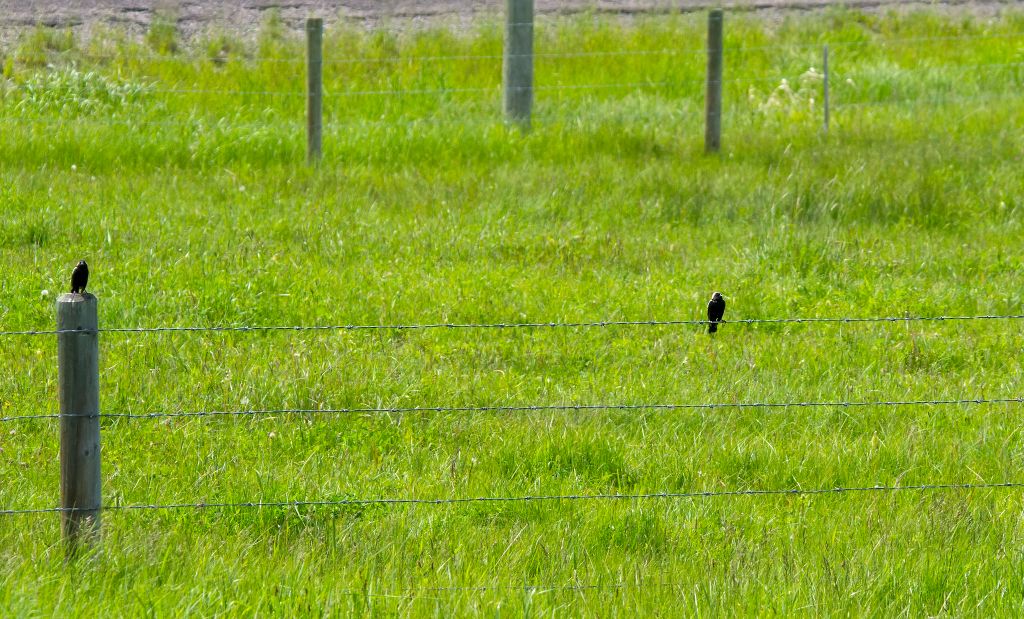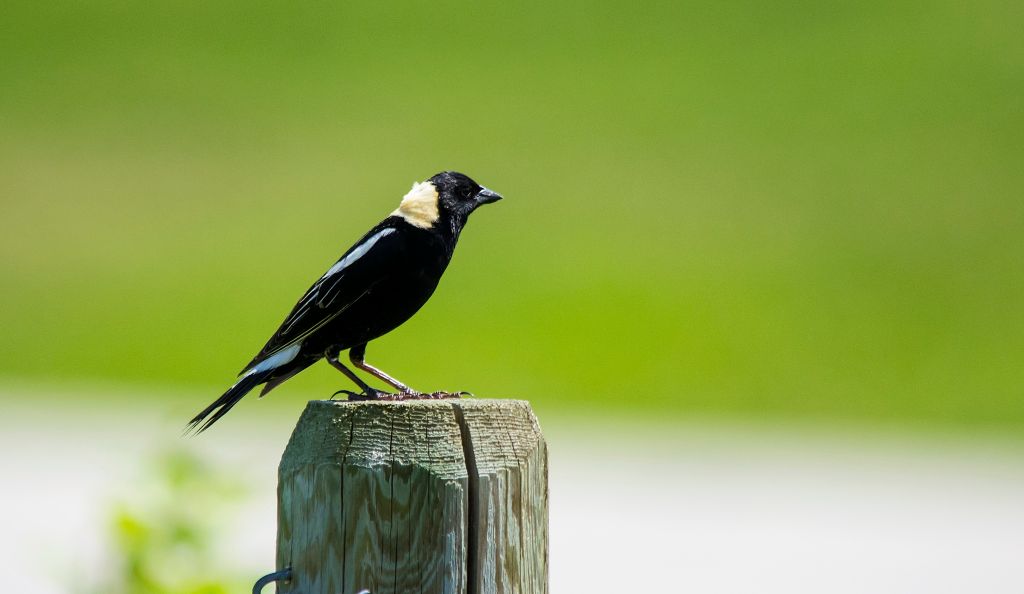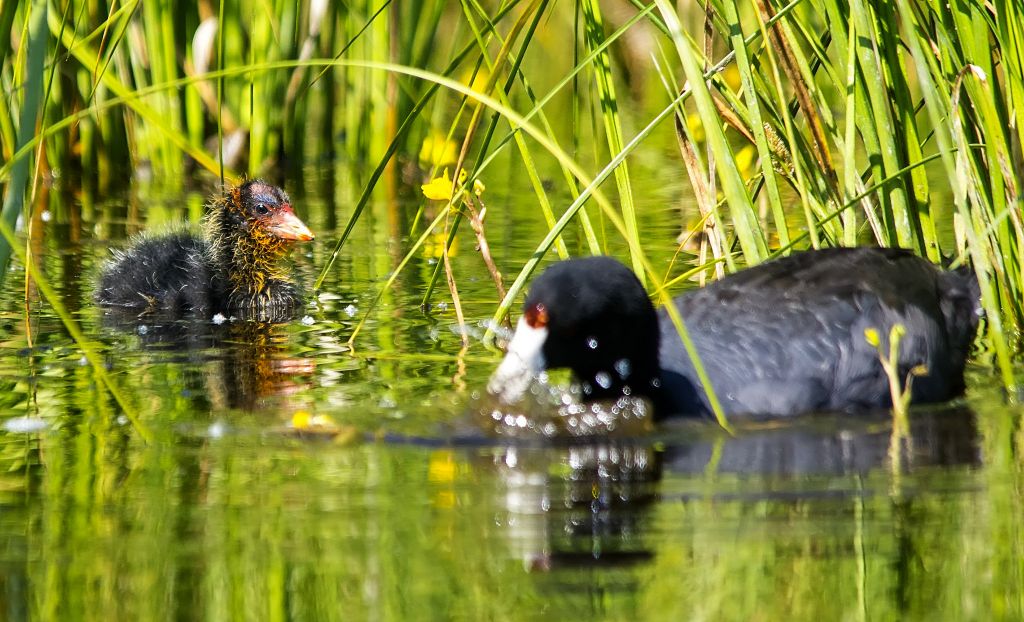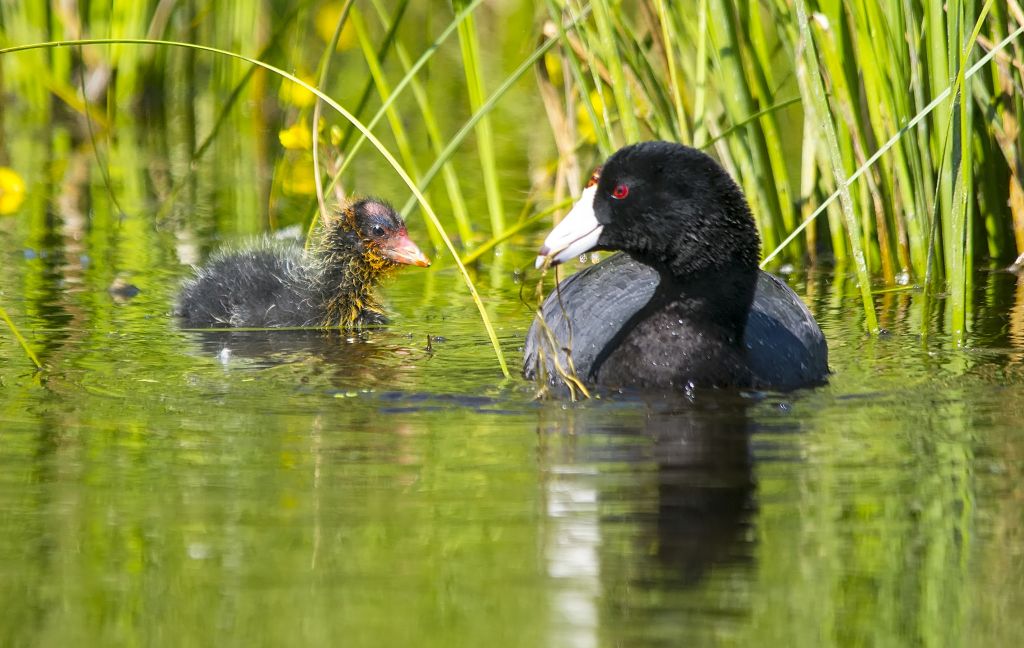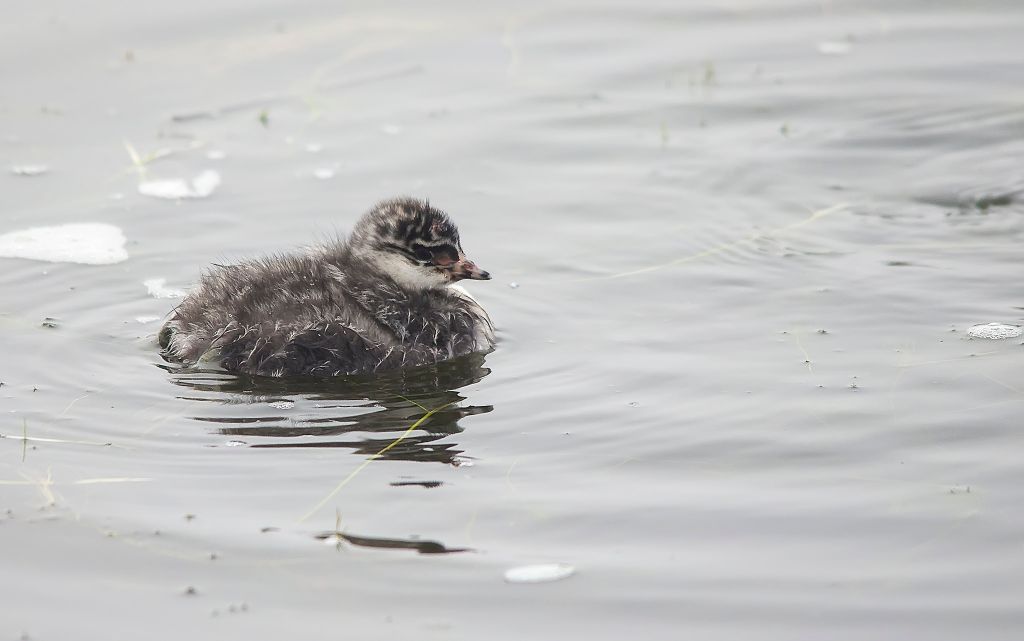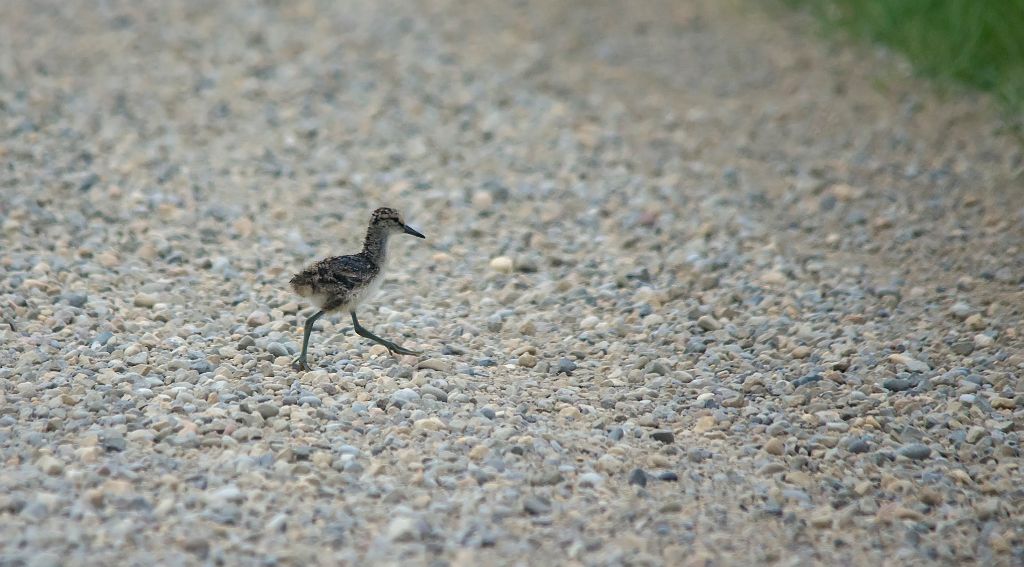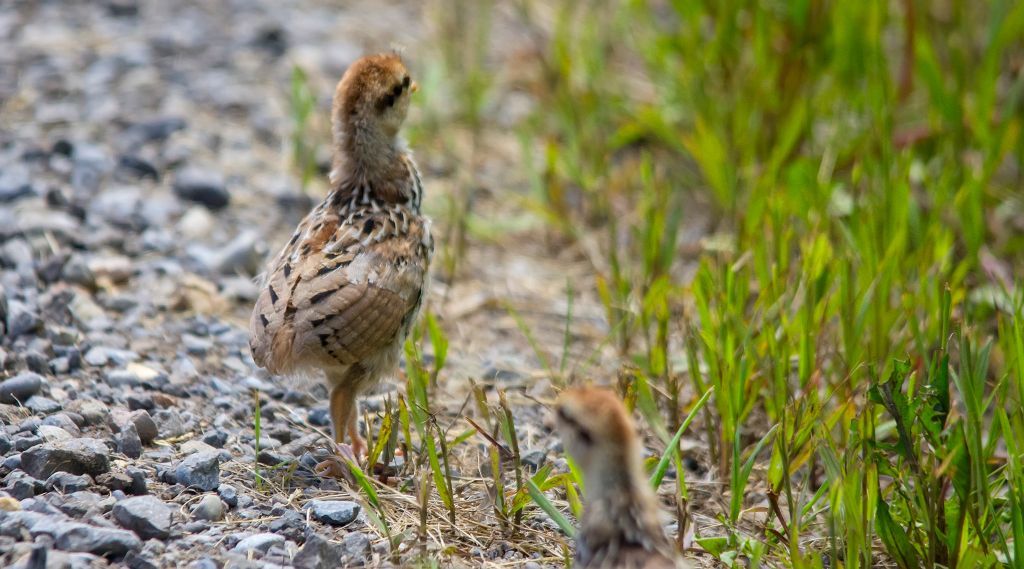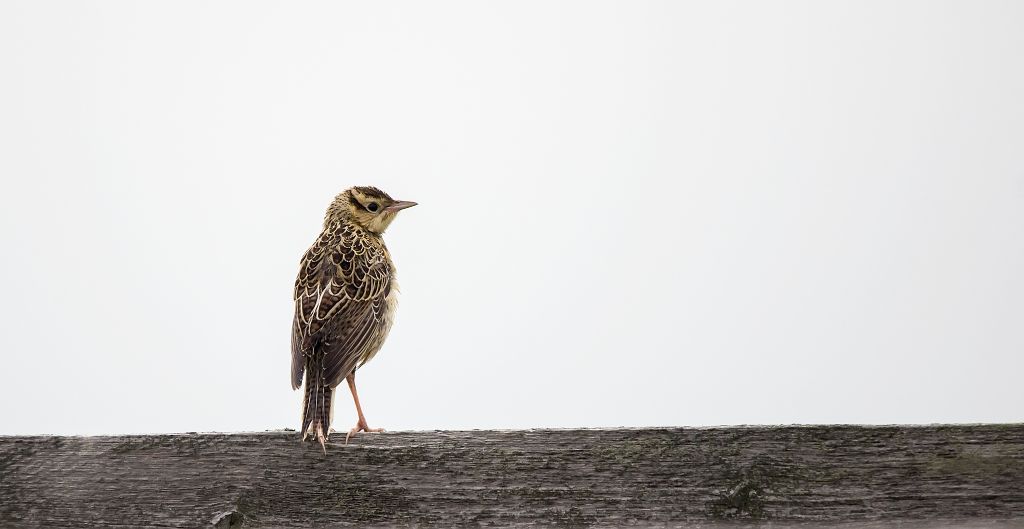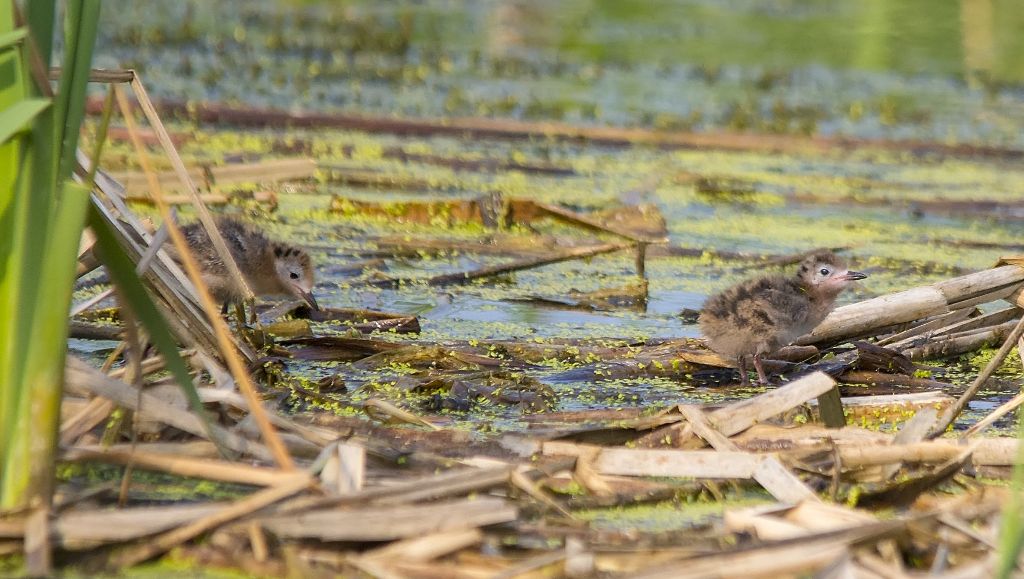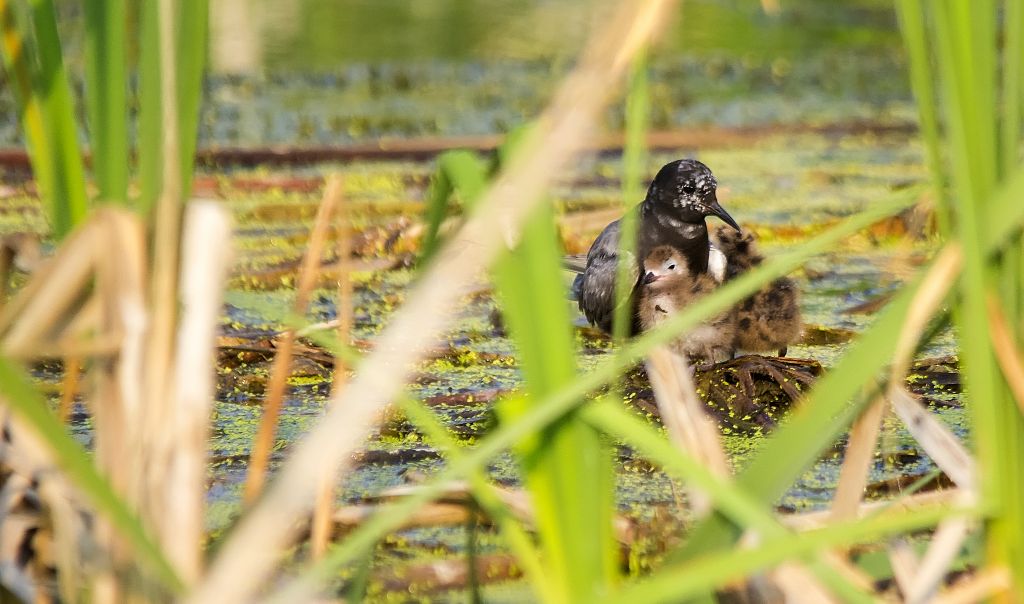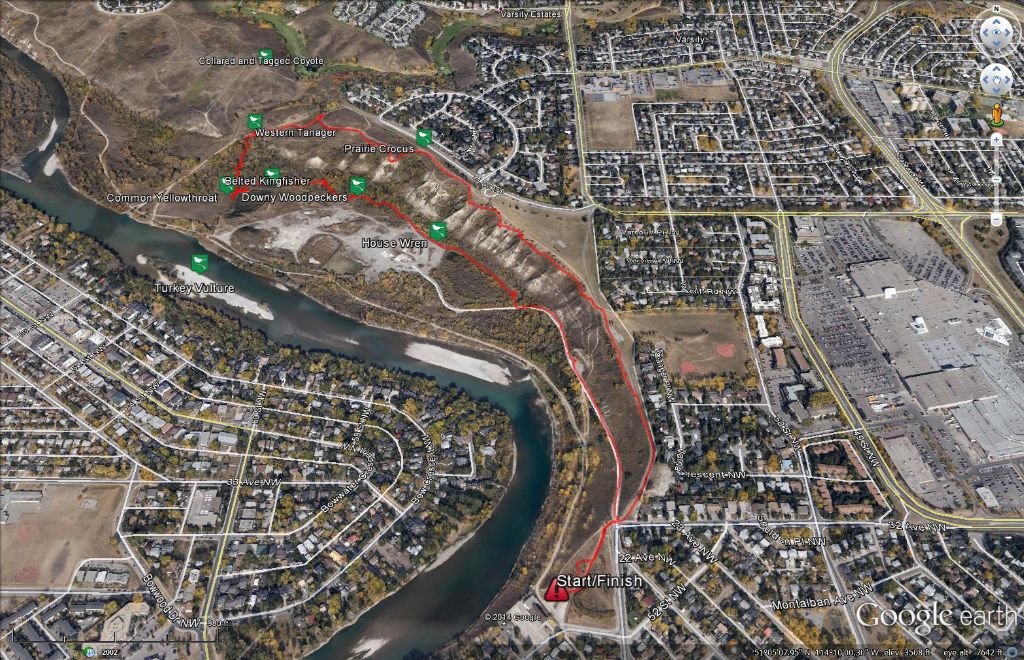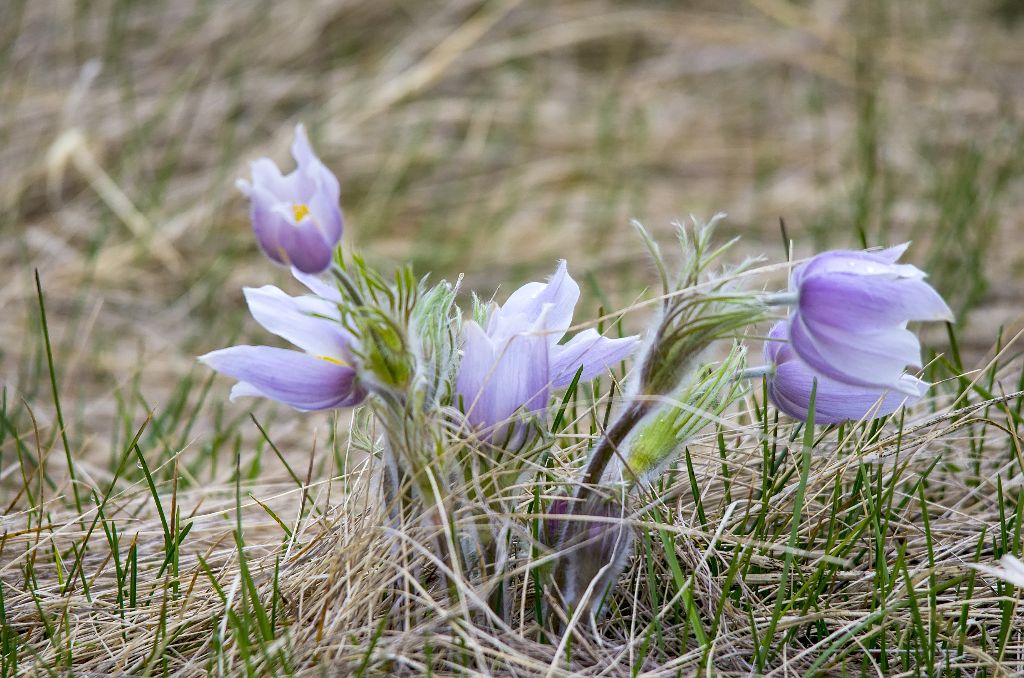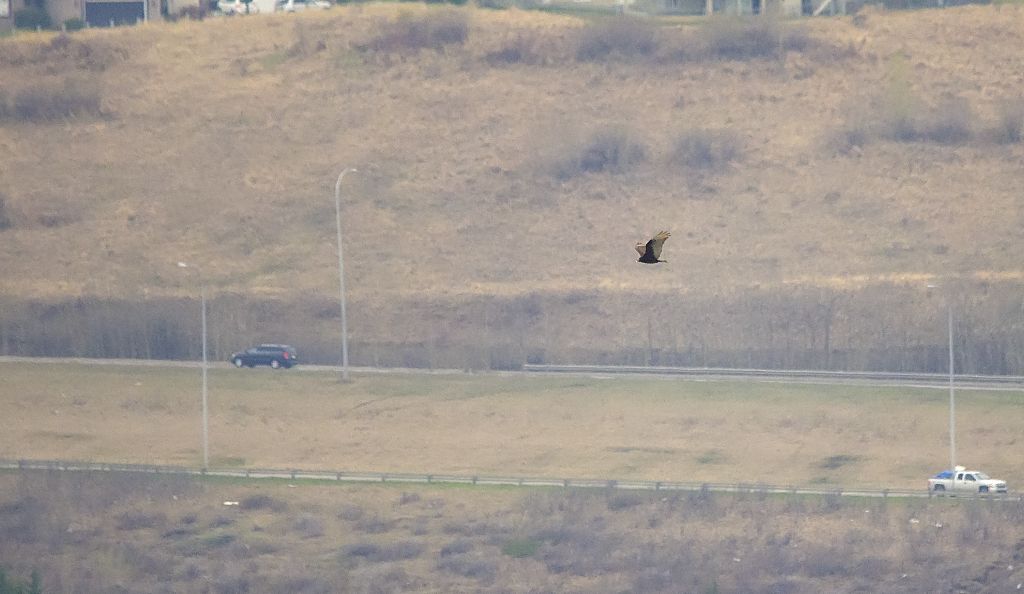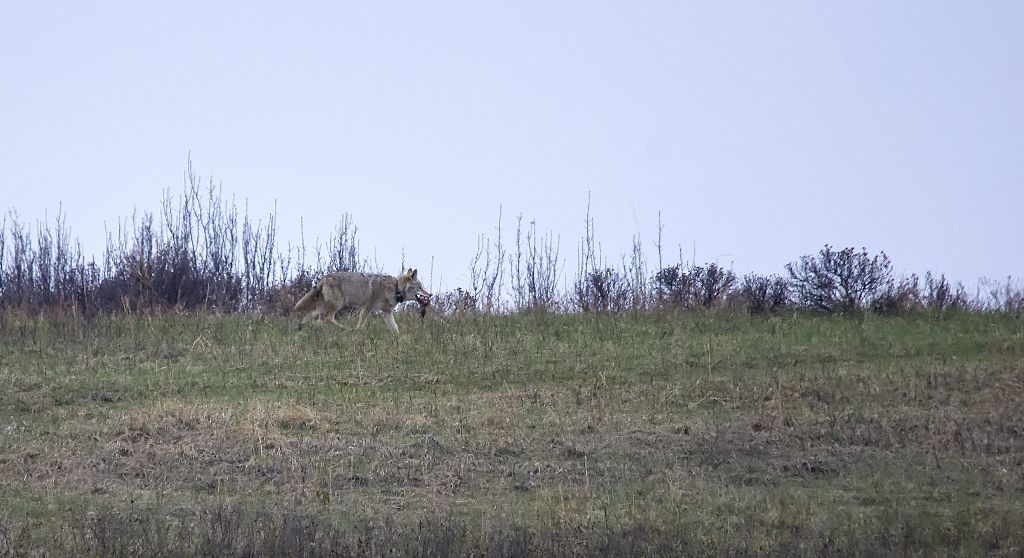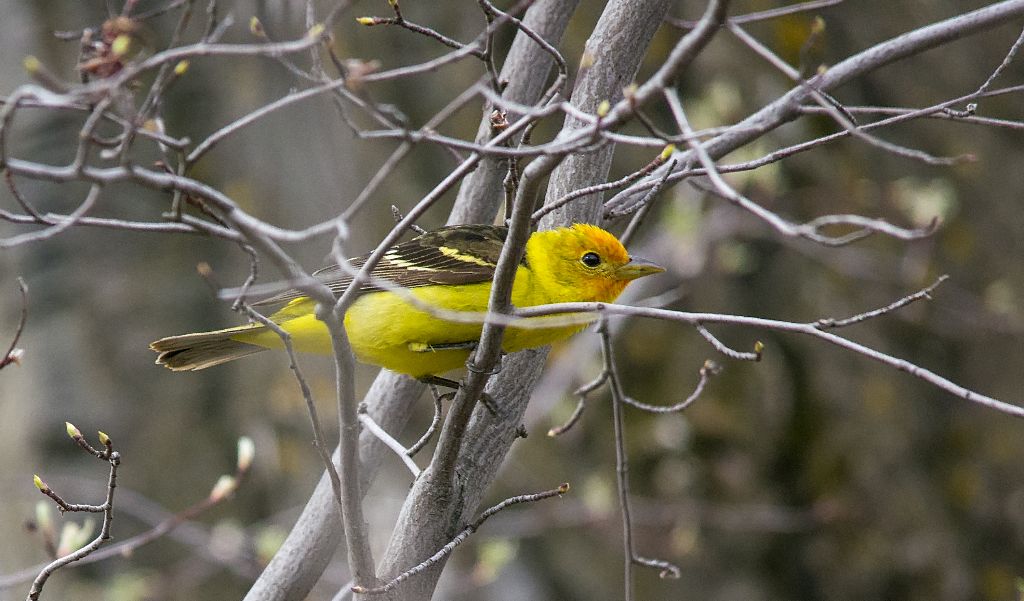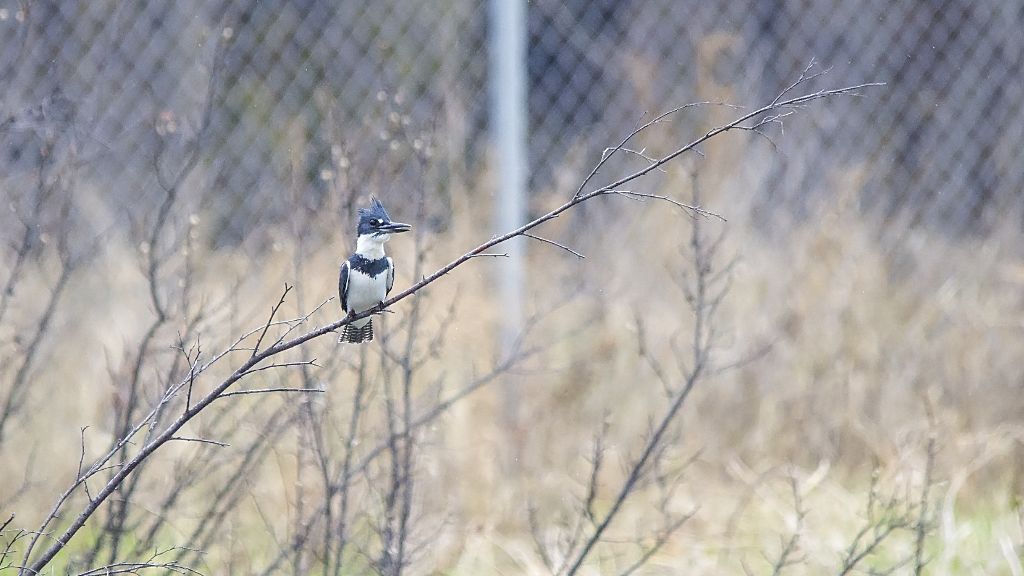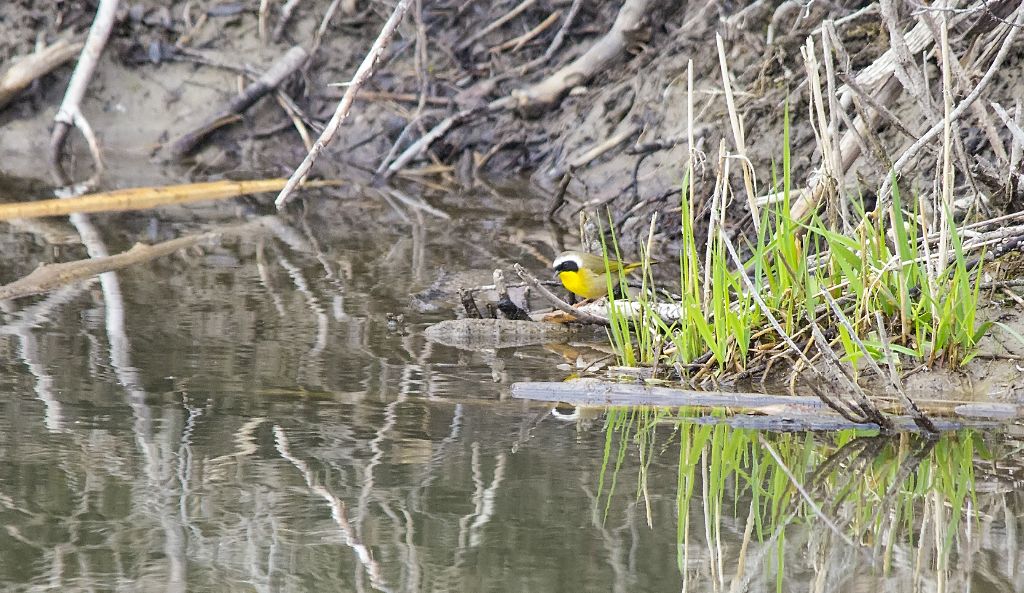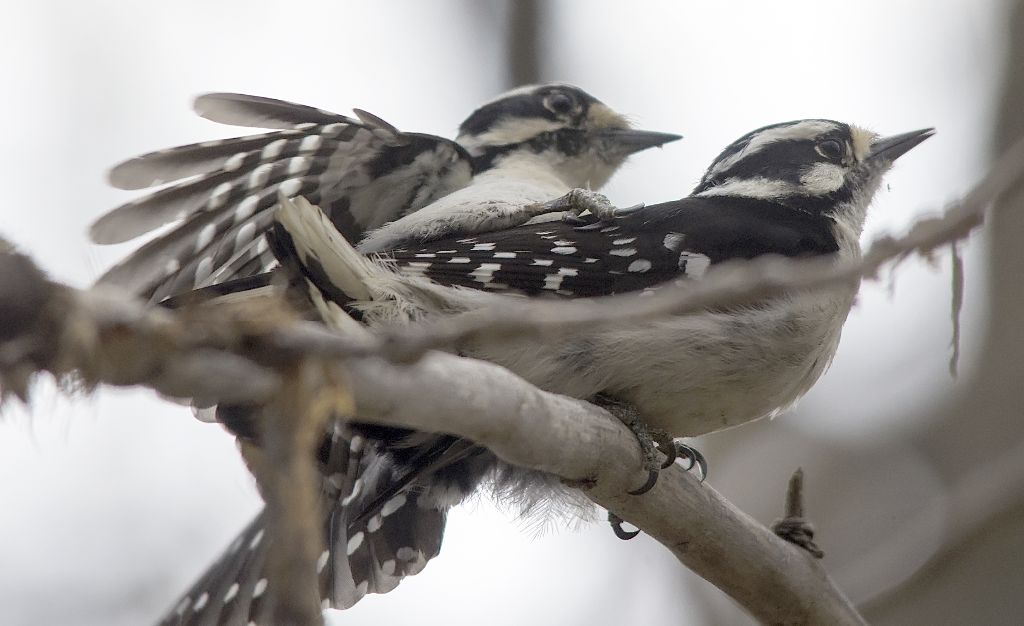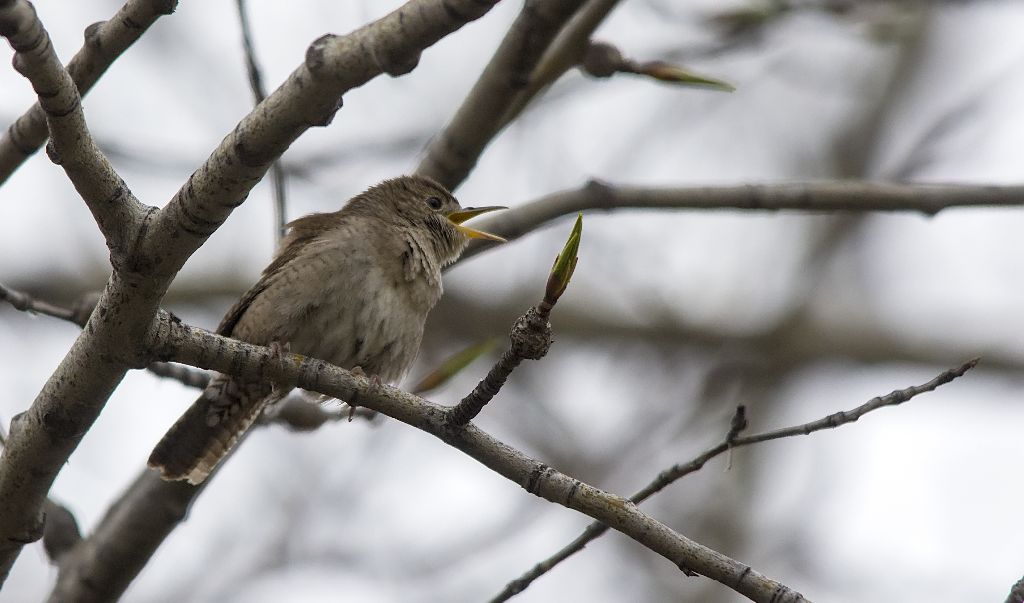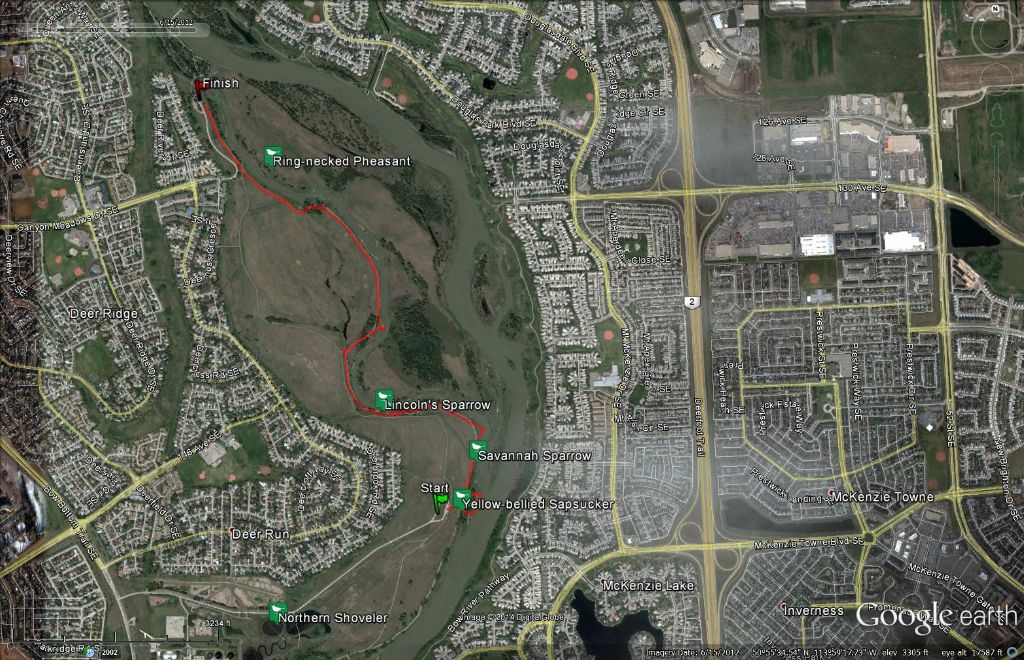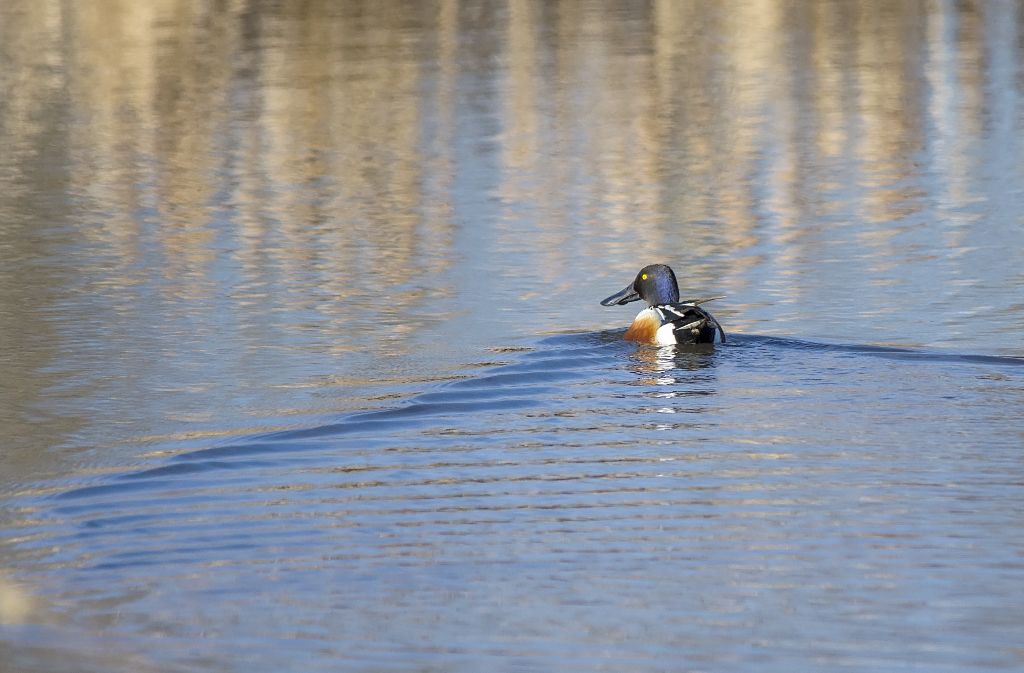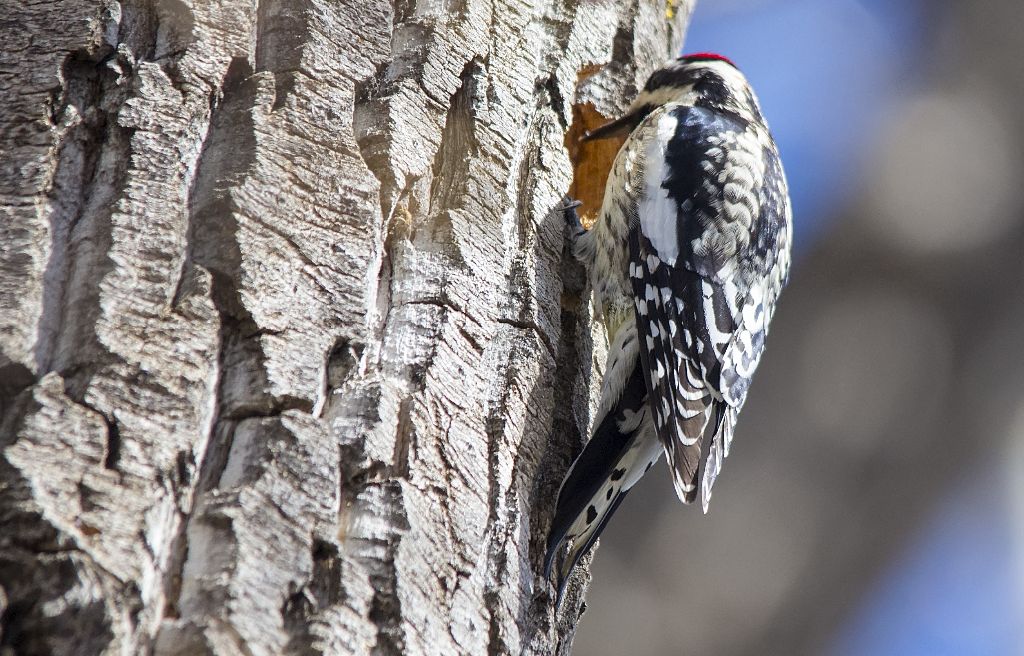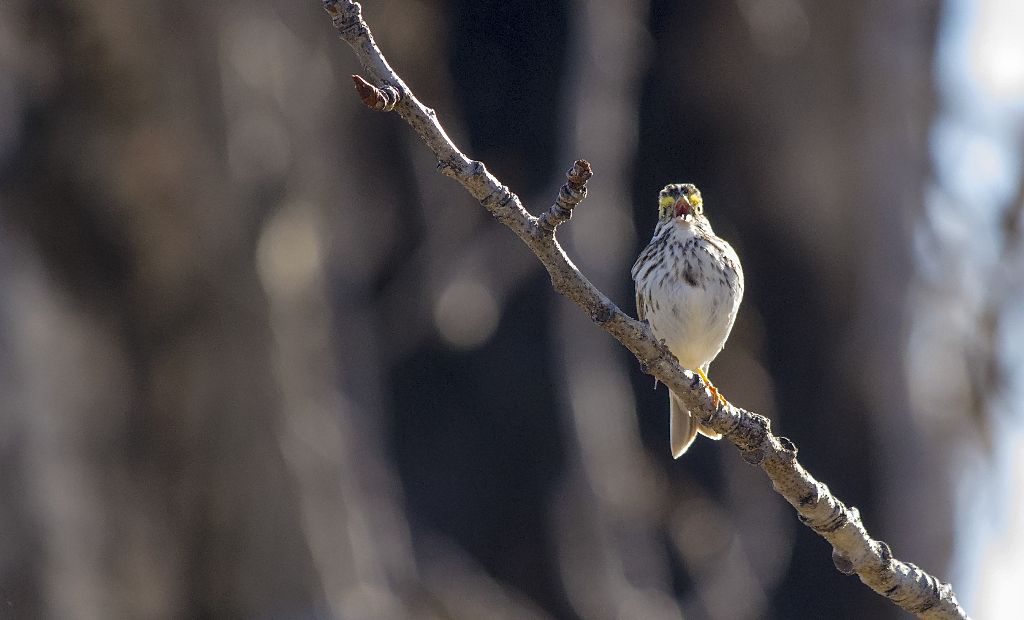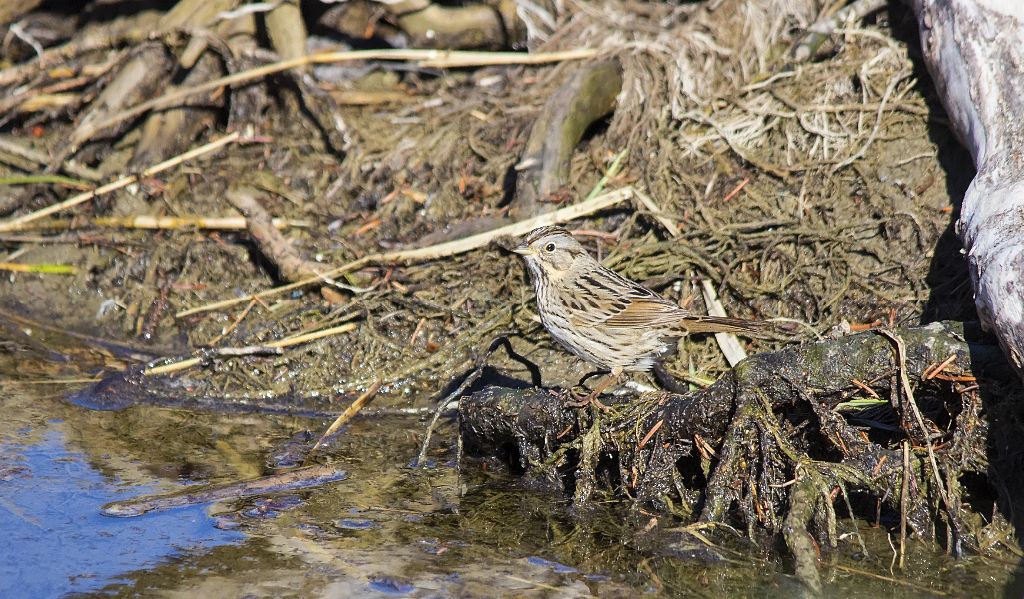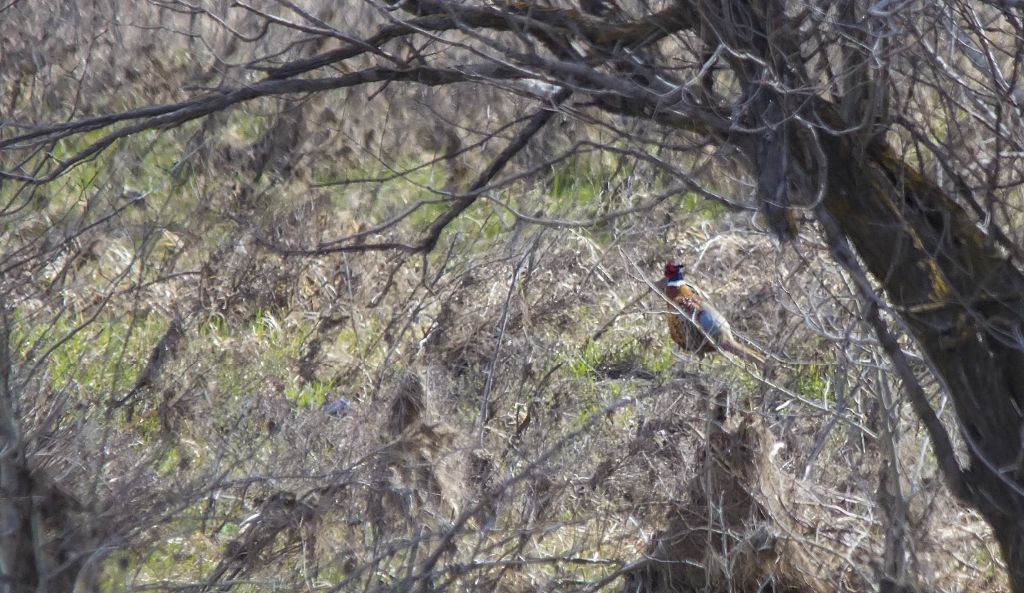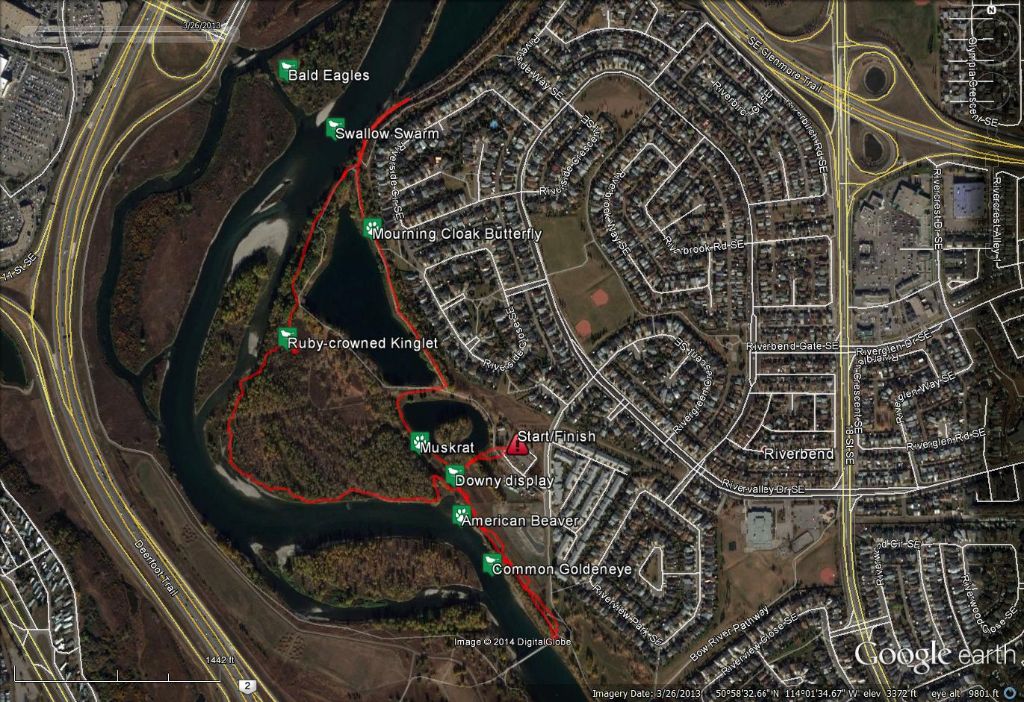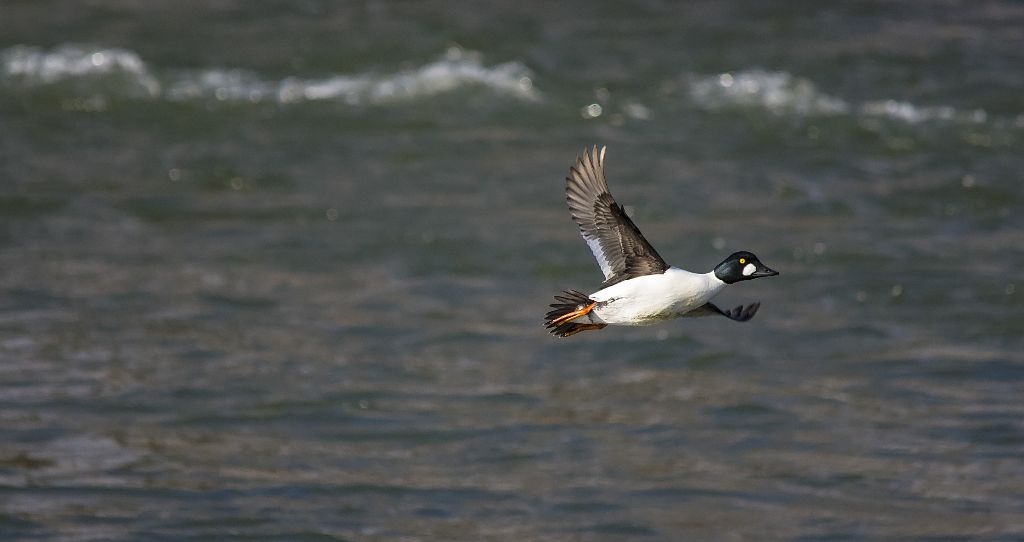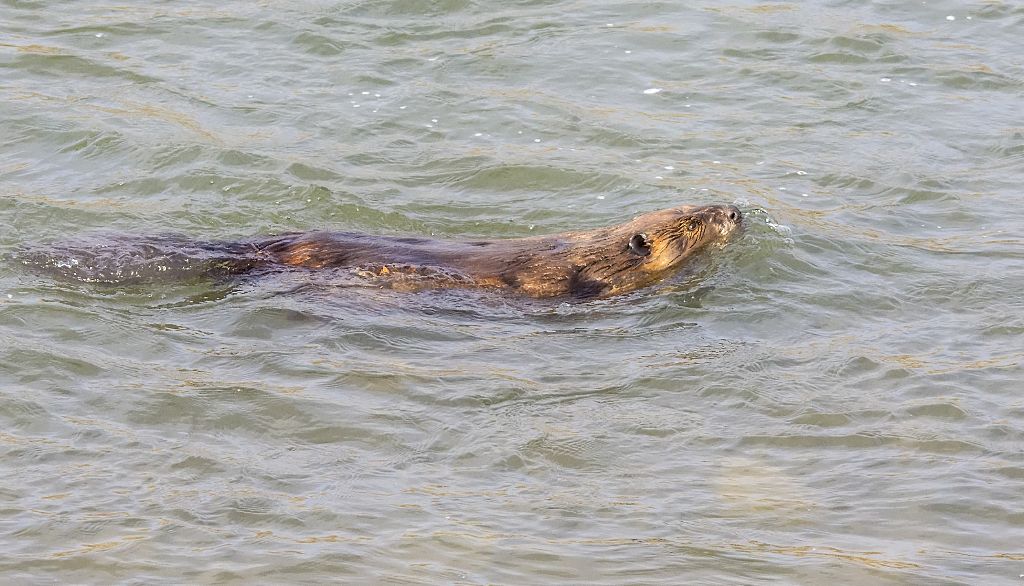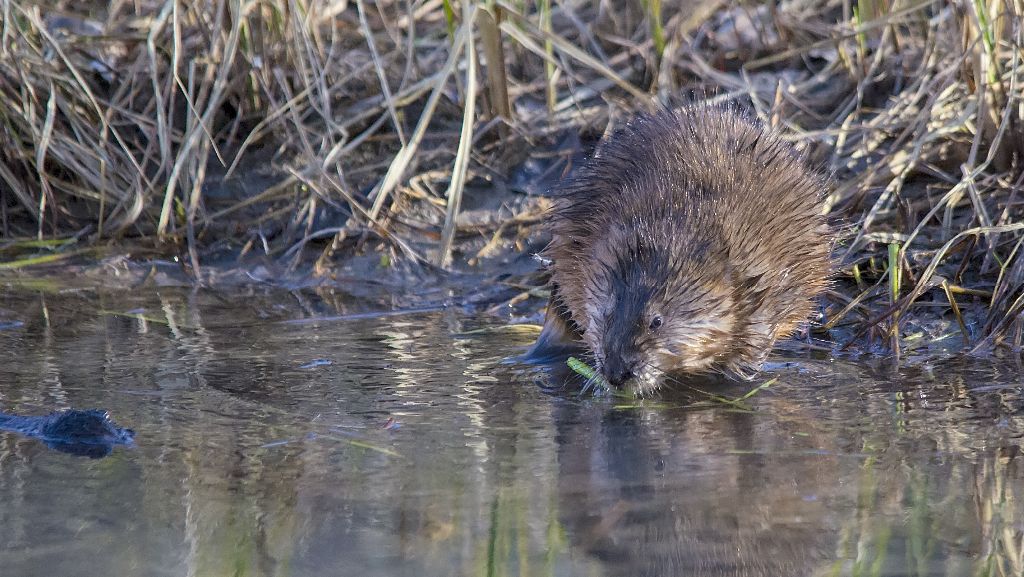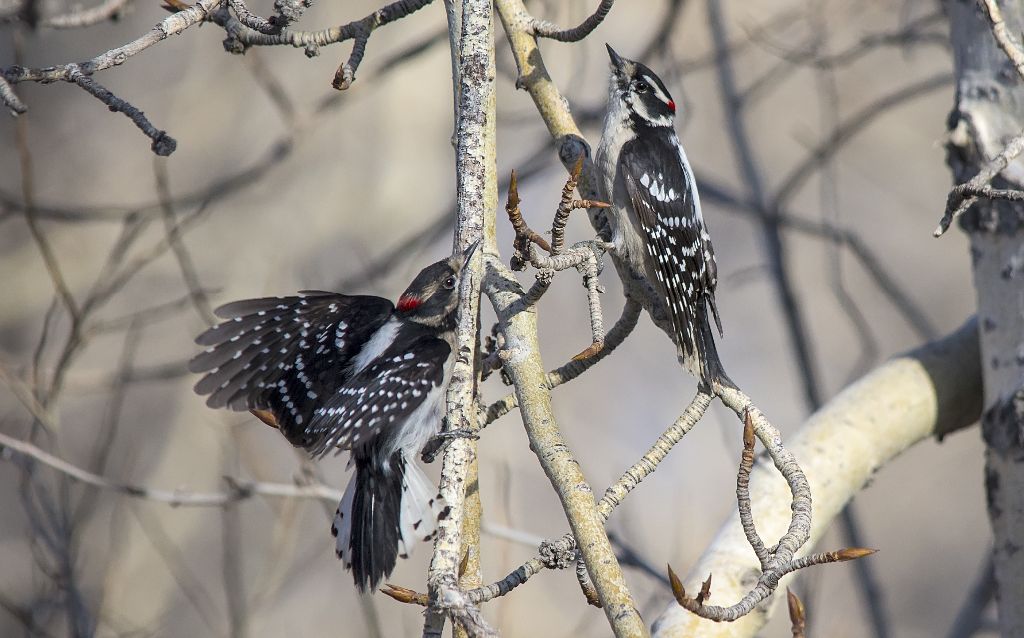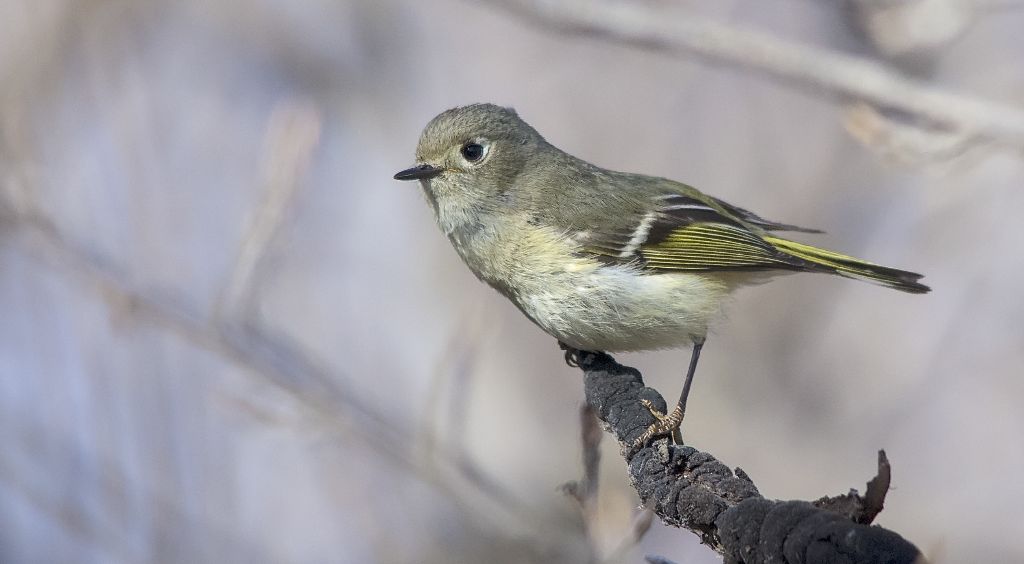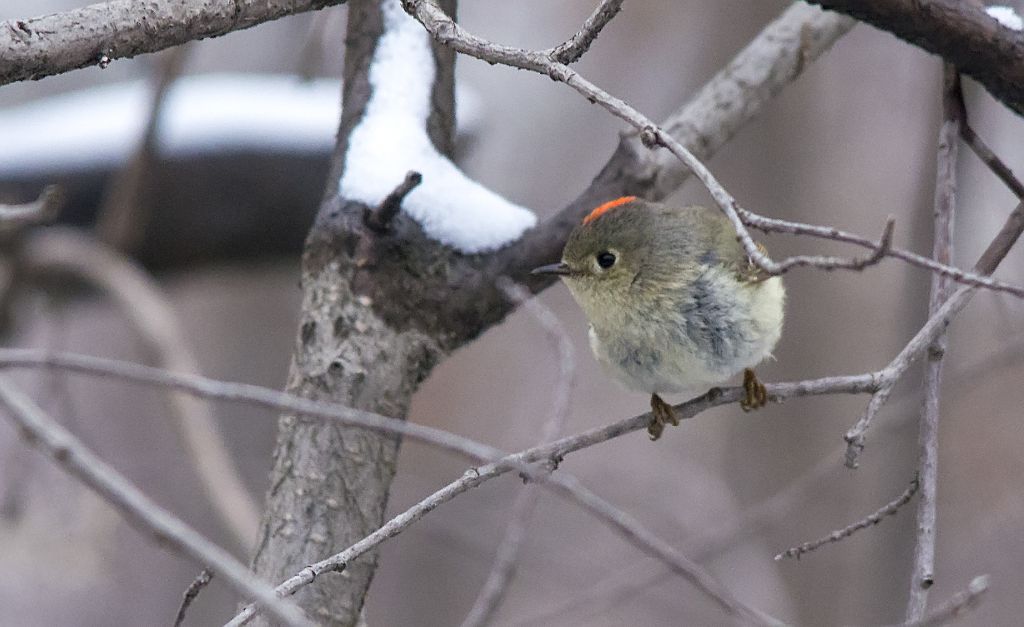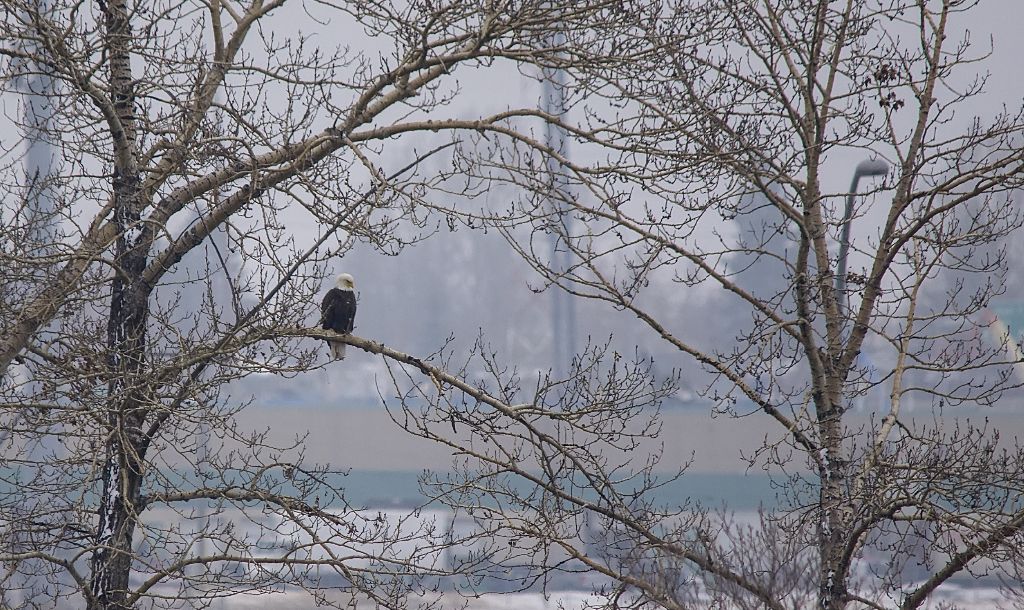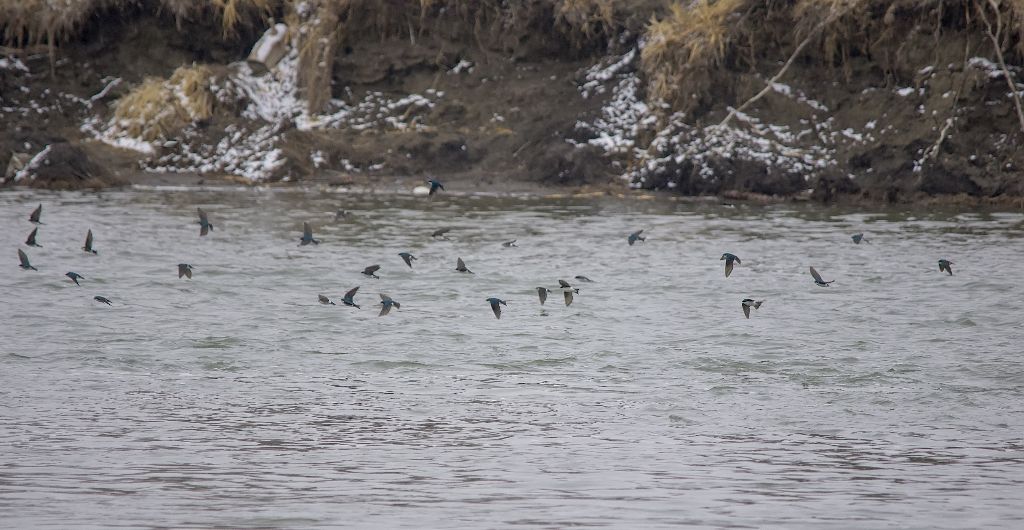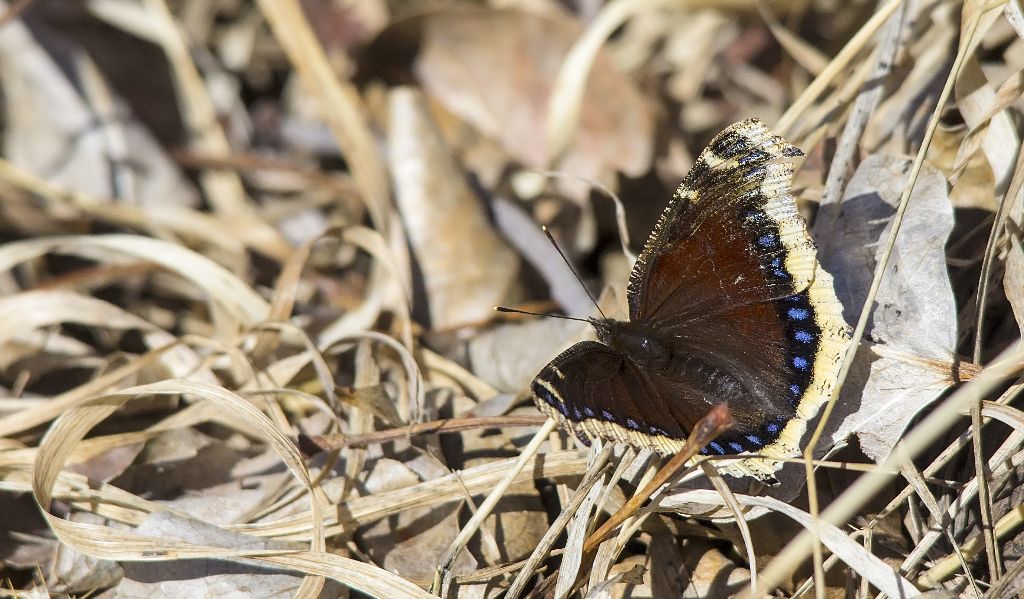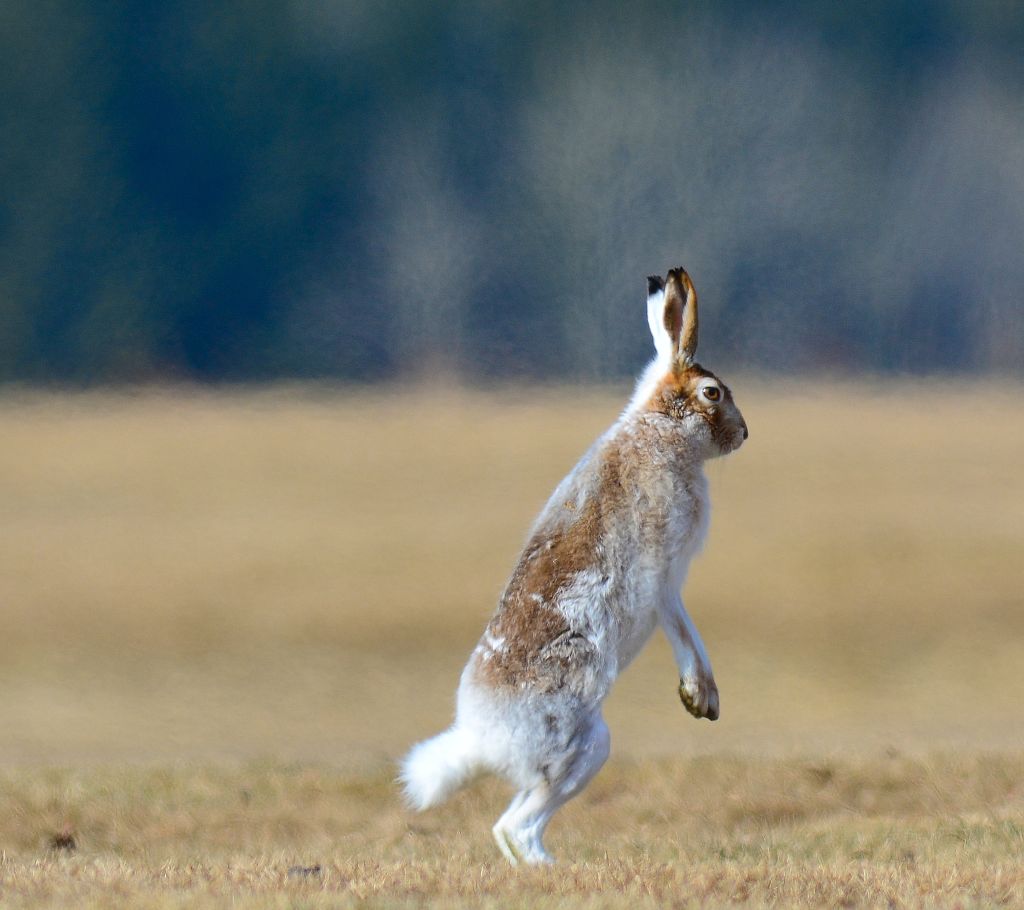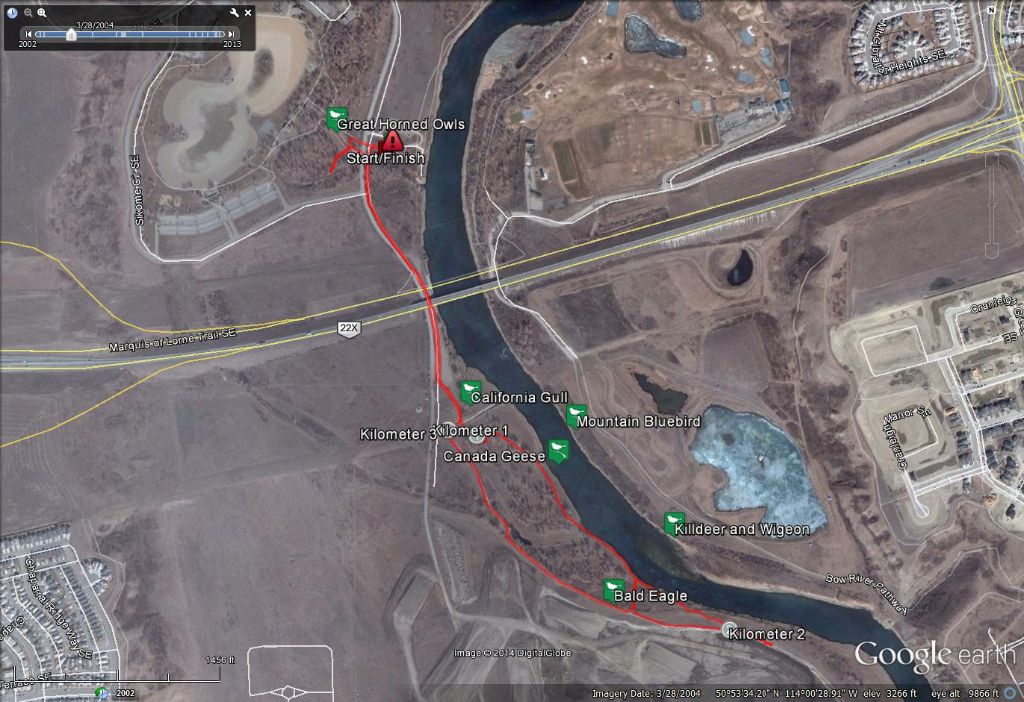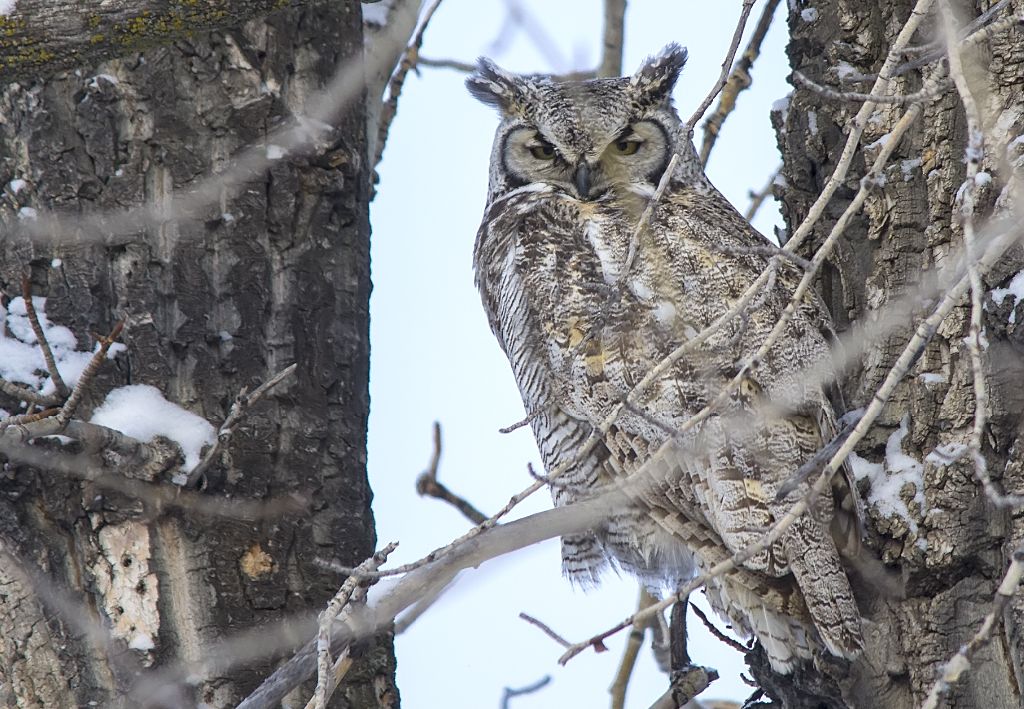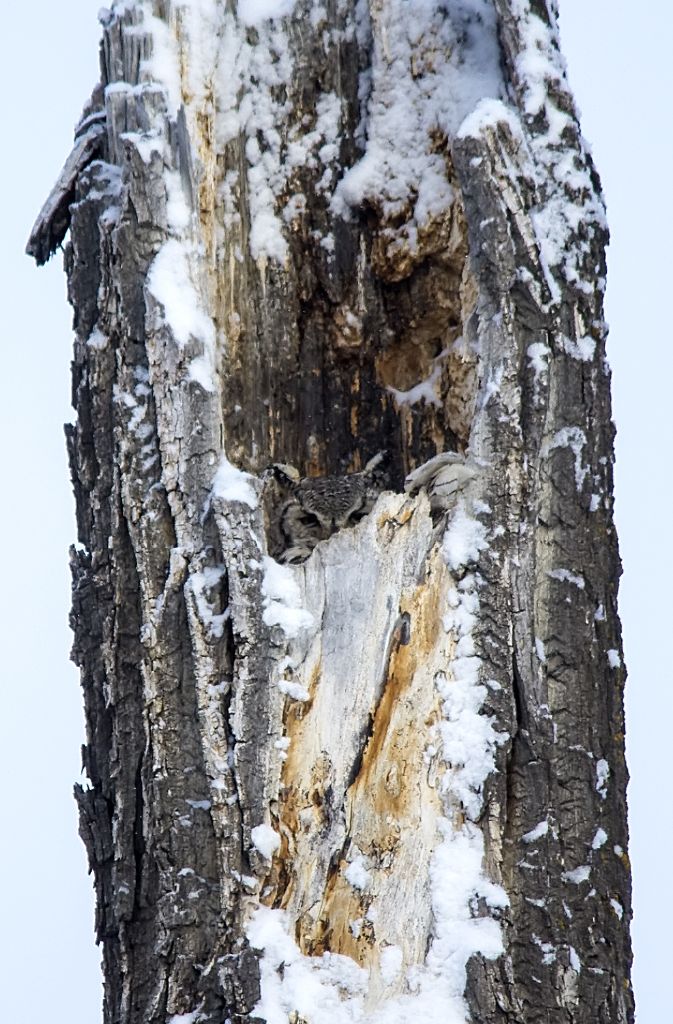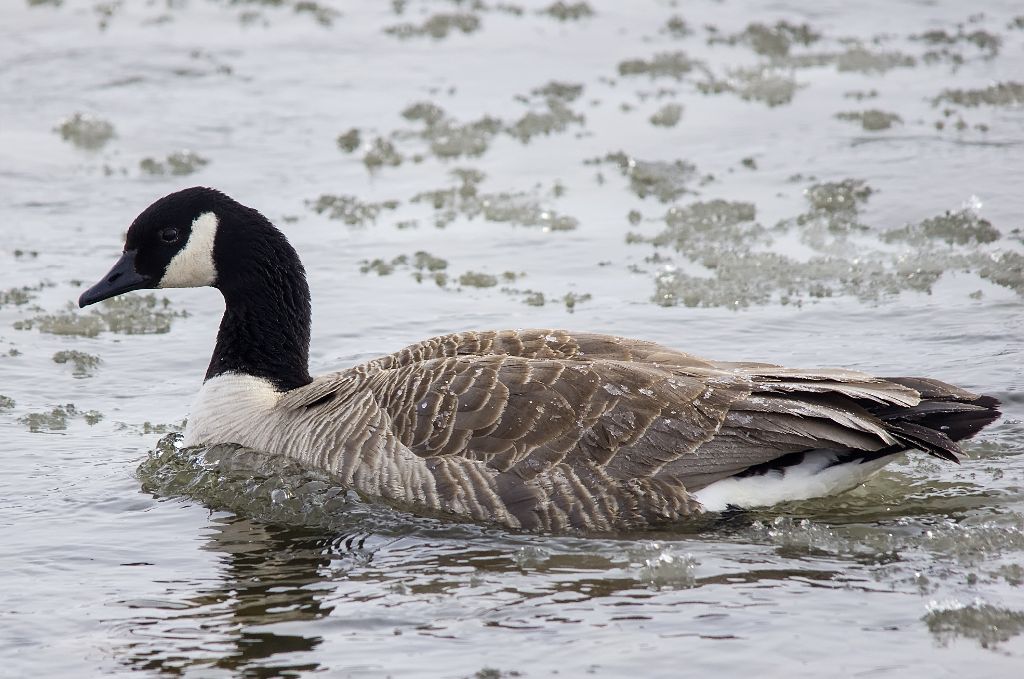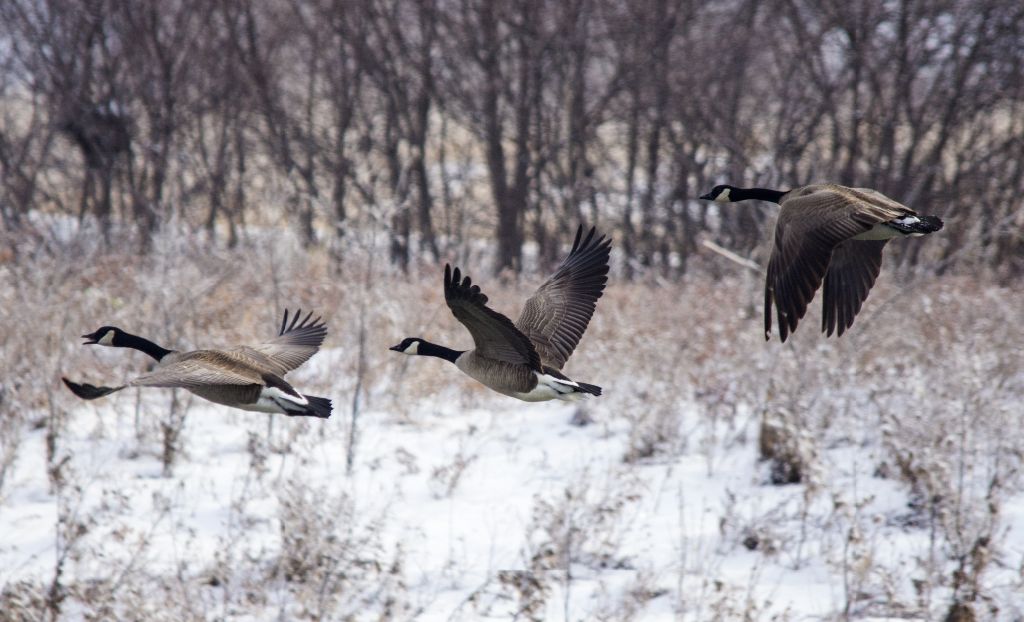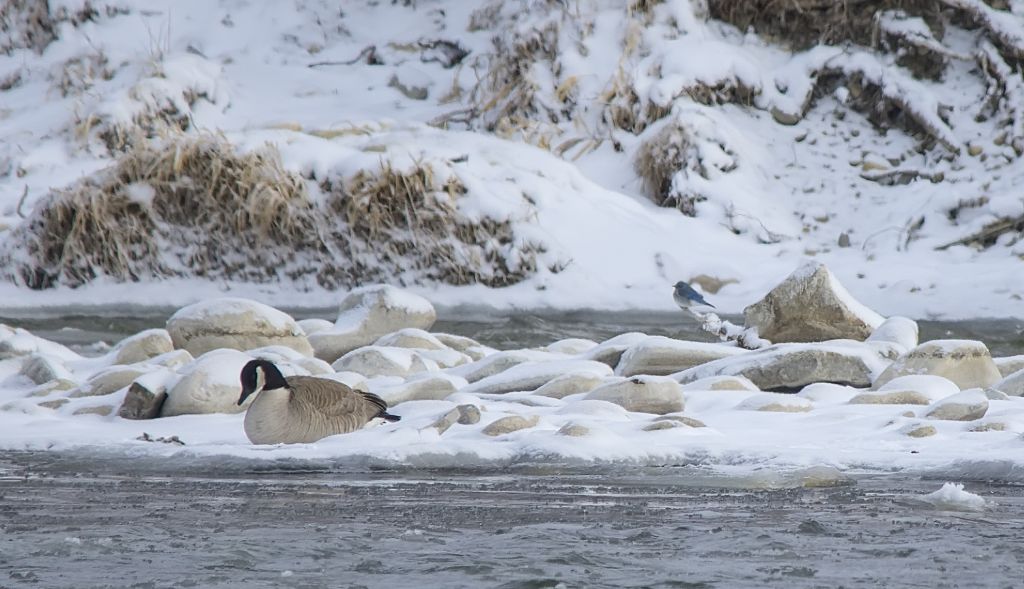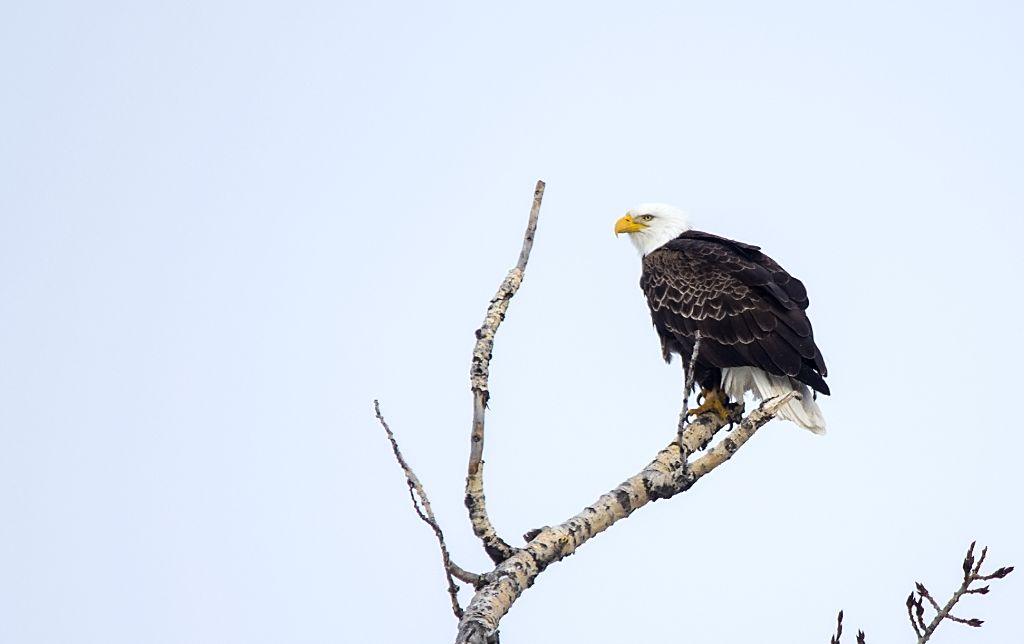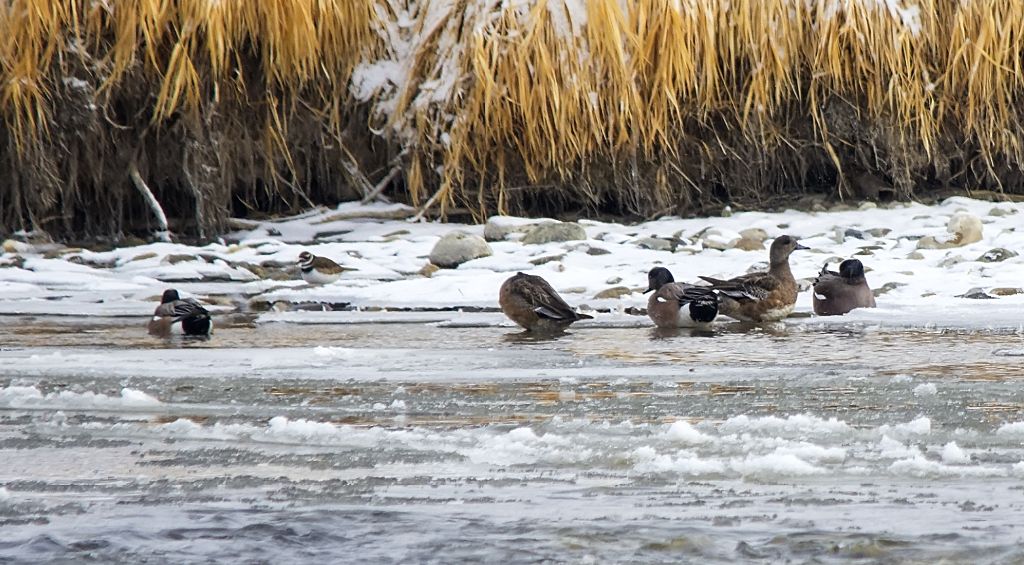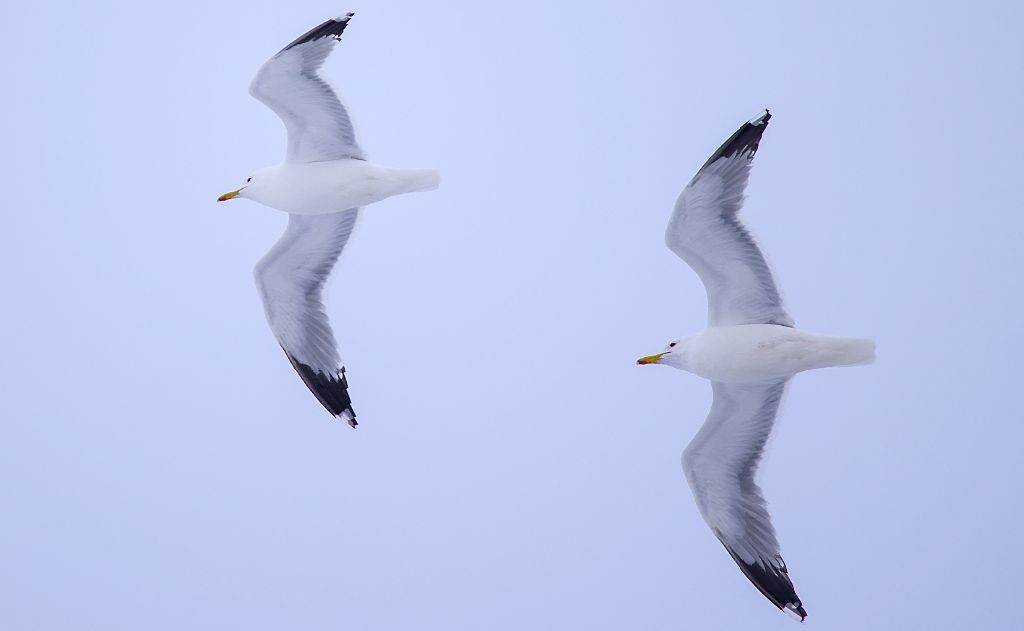Posted by Dan Arndt
One of the areas of Carburn Park that we visit a little less often are the flats and backwater ponds south of the main parking lot, and even further south of the Eric Harvie bridge all the way down south to the Ivor Strong Bridge where Deerfoot Trail crosses the Bow River (again). Last week’s outing was really quite incredible. Three new species that I’d never seen on the Friends of Fish Creek outings, and two that I’d never seen within the city limits before, which was really quite a treat! Enjoy!
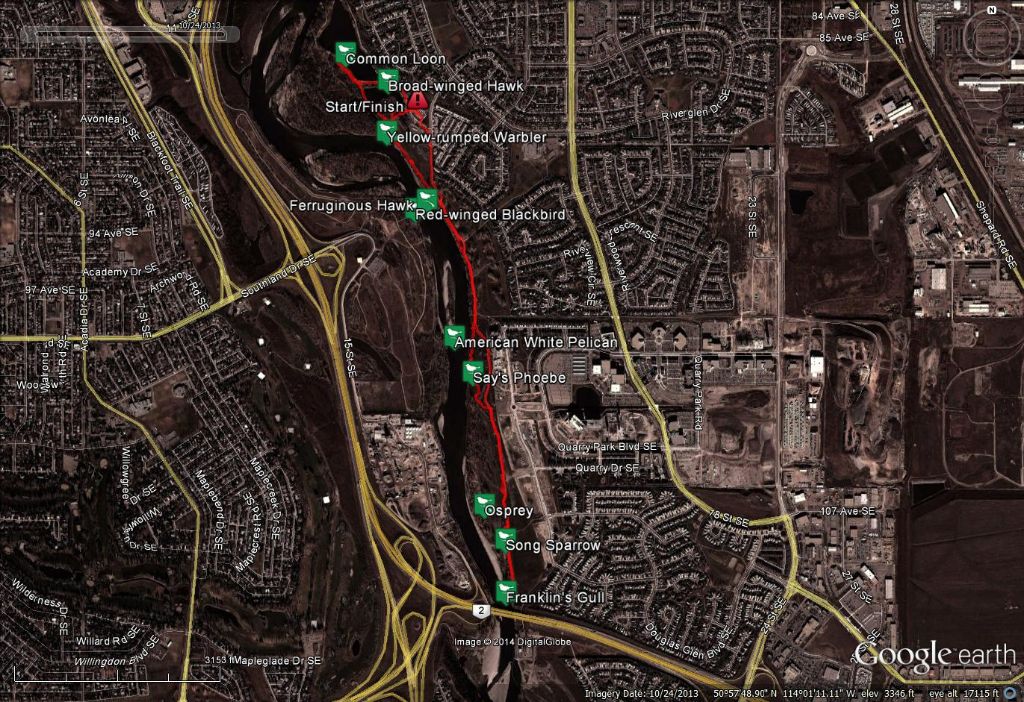
Carburn Park south of the Eric Harvie Bridge
April 27, 2014
As we started out, we headed over to the spot where we saw the North American Beaver last week, and were greeted by a small flock of hunting Yellow-rumped Warblers, a few of which stopped to pose for some nice photos.
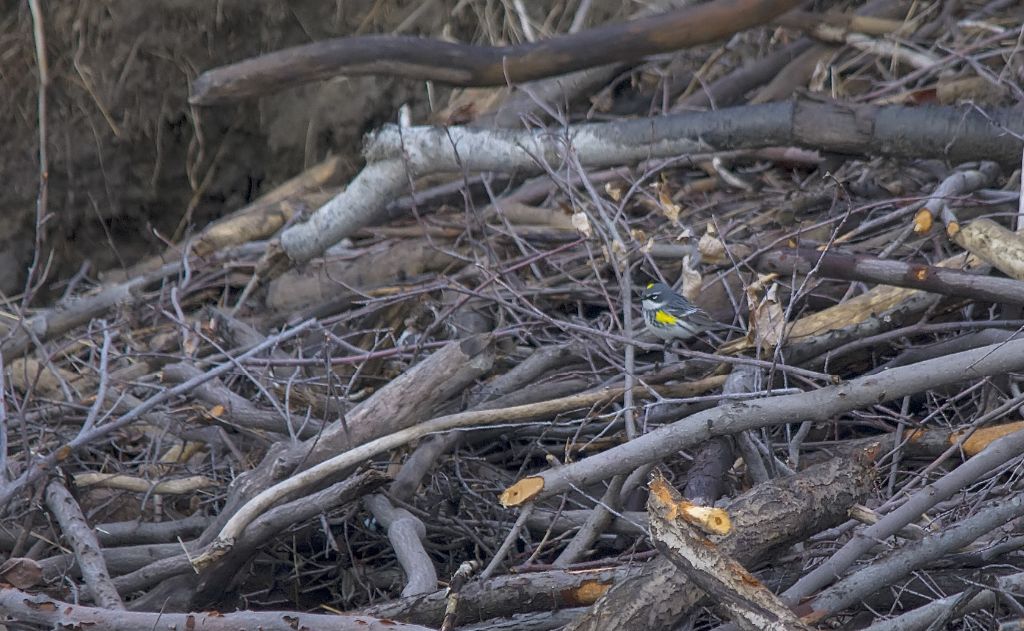
Yellow-rumped Warbler
Pentax K-5 + Sigma 150-500@500mm
1/800sec., ƒ/6.3, ISO 800
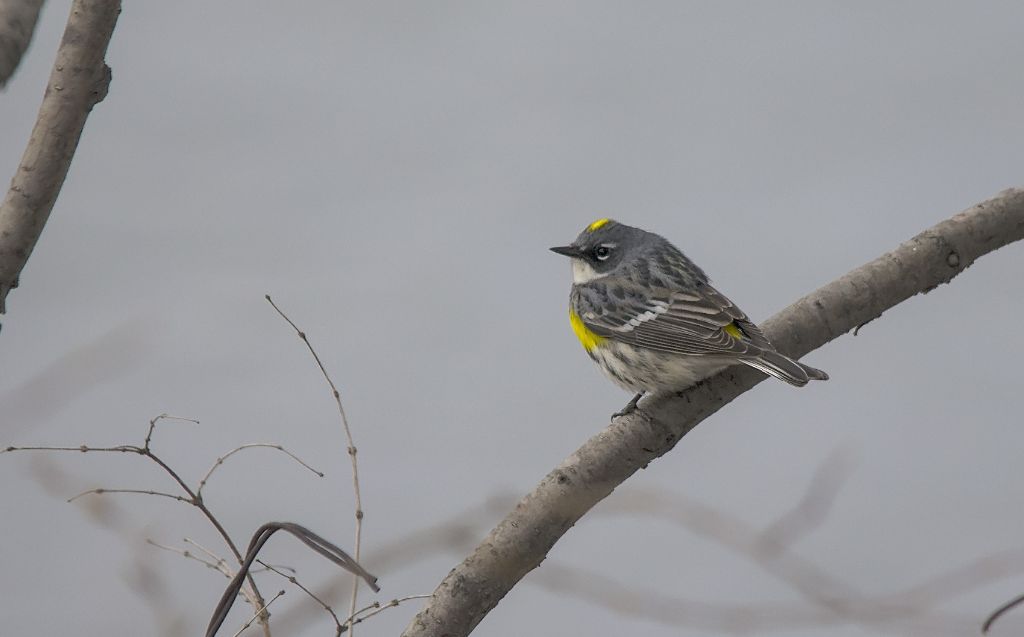
Yellow-rumped Warbler
Pentax K-5 + Sigma 150-500@500mm
1/800sec., ƒ/6.3, ISO 500
We headed across the Eric Harvie bridge in search of a number of Red-winged Blackbirds, Tree Swallows, and a few other distant birds, but one of our surprising visitors flew overhead, and in the moment, I correctly, then incorrectly identified it. My gut instinct off the bat was to call this beauty a Ferruginous Hawk, but after a moment I changed my ID to a Red-tailed Hawk. It wasn’t until I got home that I realized I was right in the first place after all, but Ferruginous Hawks aren’t really the most common bird in the Calgary area!
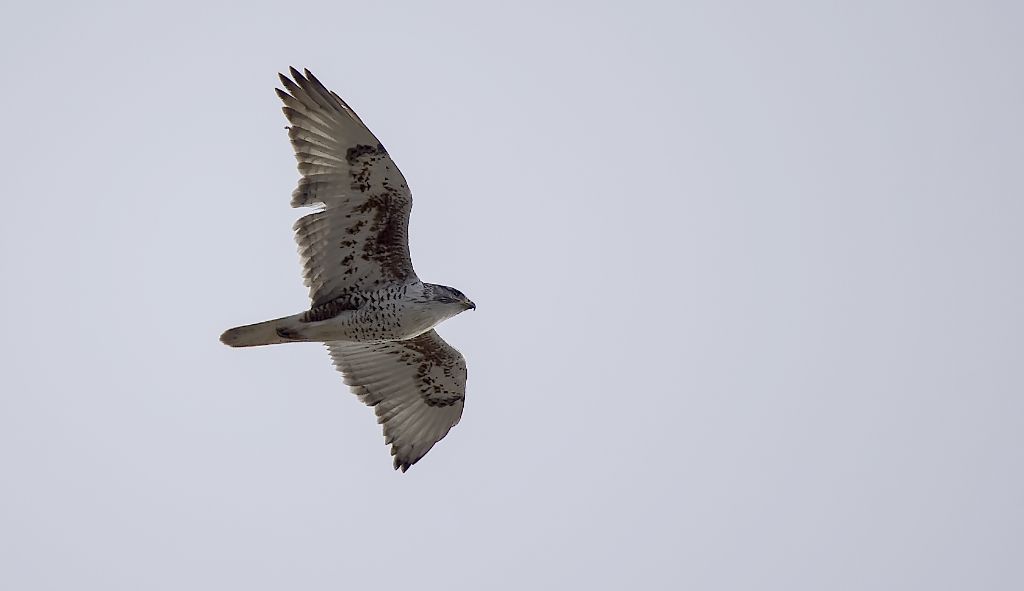
Ferruginous Hawk
Pentax K-5 + Sigma 150-500@500mm
1/1000sec., ƒ/6.3, ISO 160
This immature Red-winged Blackbird was still showing quite a bit of rusty edging on the scapulars and secondary flight feathers, indicating that this is an immature male.
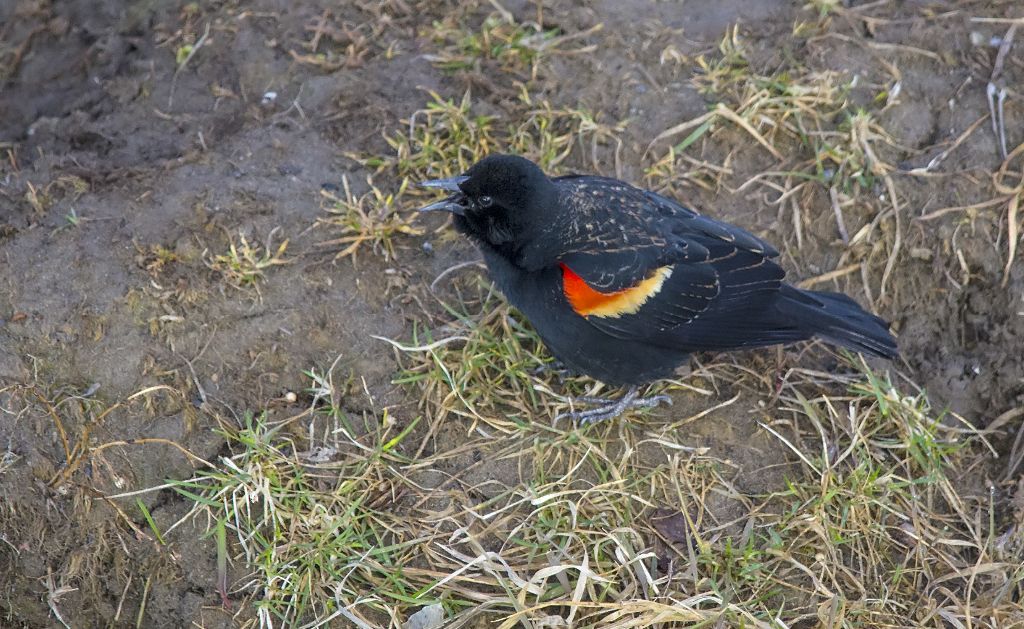
Red-winged Blackbird
Pentax K-5 + Sigma 150-500@500mm
1/1000sec., ƒ/6.3, ISO 2000
We headed further south along the trails and happened upon the first American White Pelican that our group would see for the year. The crest on the mandible indicates that this is a male, and he seemed content to just snooze away the morning.
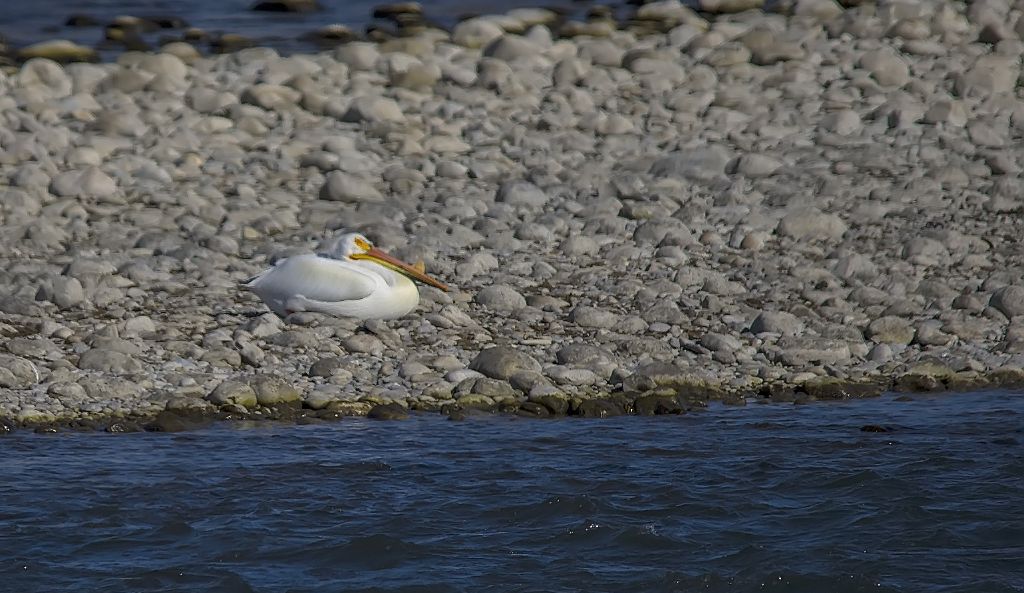
American White Pelican
Pentax K-5 + Sigma 150-500@500mm
1/2000sec., ƒ/6.3, ISO 125
In the trees nearby were a small flock of Black-capped Chickadees begging for a meal, a lone Ruby-crowned Kinglet going about his business of looking for some food, but in an open expanse to the south an odd shape presented itself. At first, I thought it to be an American Robin, but on closer inspection it was certainly a flycatcher of some sort, and once I got even a little closer, I knew for sure that the yellowish-brown undertones, white wing bars, grayish “vest”, and crest must indicate a Say’s Phoebe, which was a great find for our group!
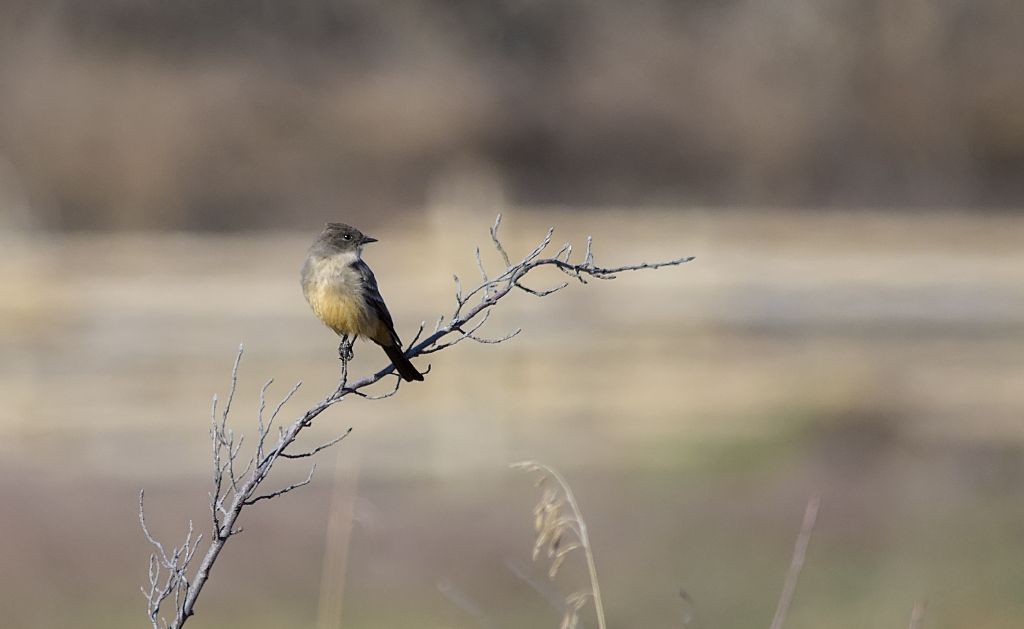
Say’s Phoebe
Pentax K-5 + Sigma 150-500@500mm
1/1600sec., ƒ/6.3, ISO 400
Another good look at yet another new spring species was this Song Sparrow that led a few of our photographers on a merry chase before stopping for a quick pose right in front of me in great light!
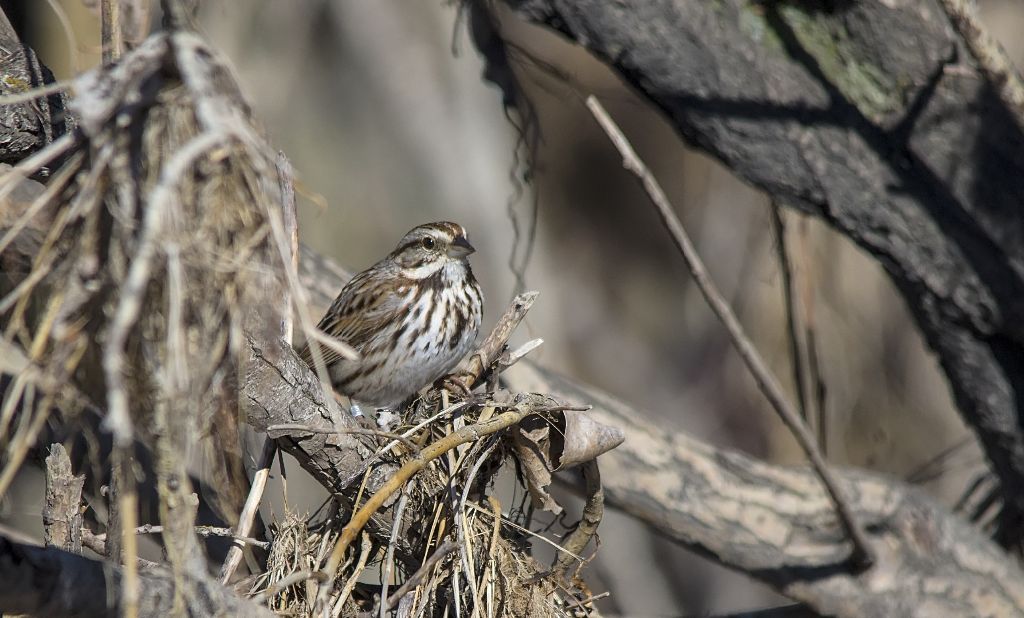
Song Sparrow
Pentax K-5 + Sigma 150-500@500mm
1/2000sec., ƒ/6.3, ISO 400
Down at the far south end we did find a group of Franklin’s Gulls feeding in some oddly smelling water at the mixture point between the fast-moving river water, and the slower moving back-channel. Whatever it was, they sure seemed to enjoy it!
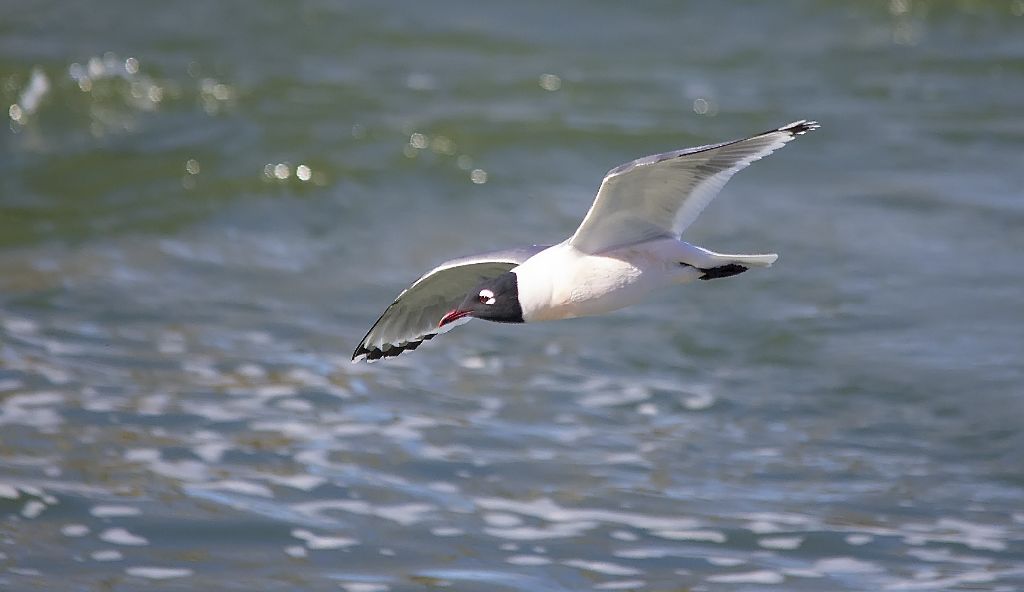
Franklin’s Gull
Pentax K-5 + Sigma 150-500@500mm
1/2000sec., ƒ/6.3, ISO 800
My first Osprey pair of the season also showed up in one of their usual spots in the area near the Lafarge gravel pit at their Bow River Aggregates site, just one of at least three pair of Osprey in and around the Carburn Park area!
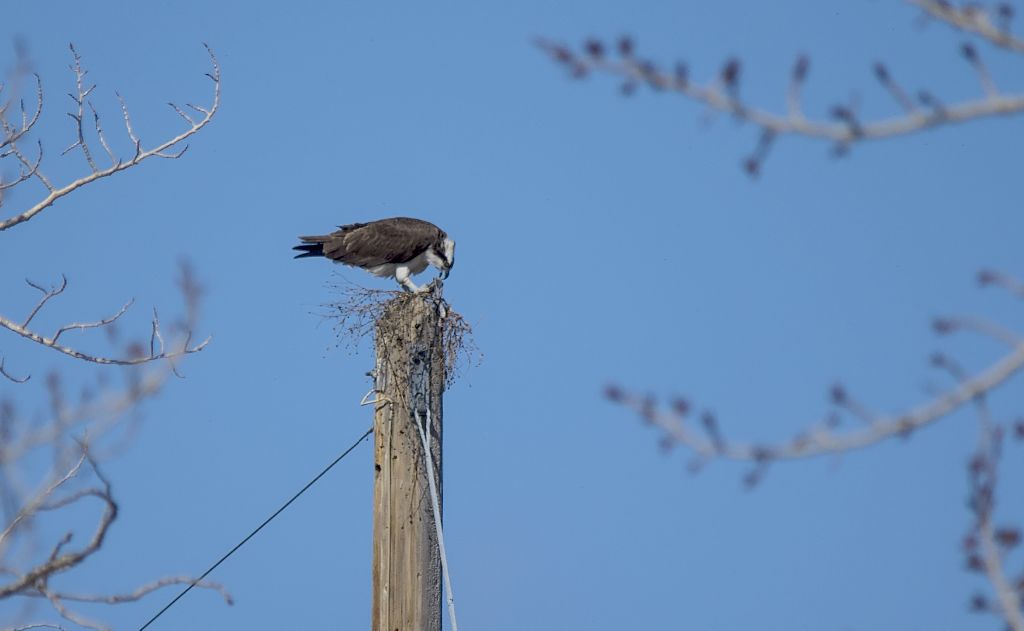
Osprey having a bite
Pentax K-5 + Sigma 150-500@500mm
1/2000sec., ƒ/6.3, ISO 200
From here we headed back, and most of my group headed on their way home, but if they had stuck with me for just a few more minutes, they would have been treated to two great sights. The first of which, this Broad-winged Hawk, was my first sighting of this species in the Calgary area. While they do happen through on occasion during spring and fall migration, they had so far eluded me! You can identify this uncommon species by the broad black and white tail bands, and the black fringing on the very edge of the wings, with very light speckling on the belly and underwing.
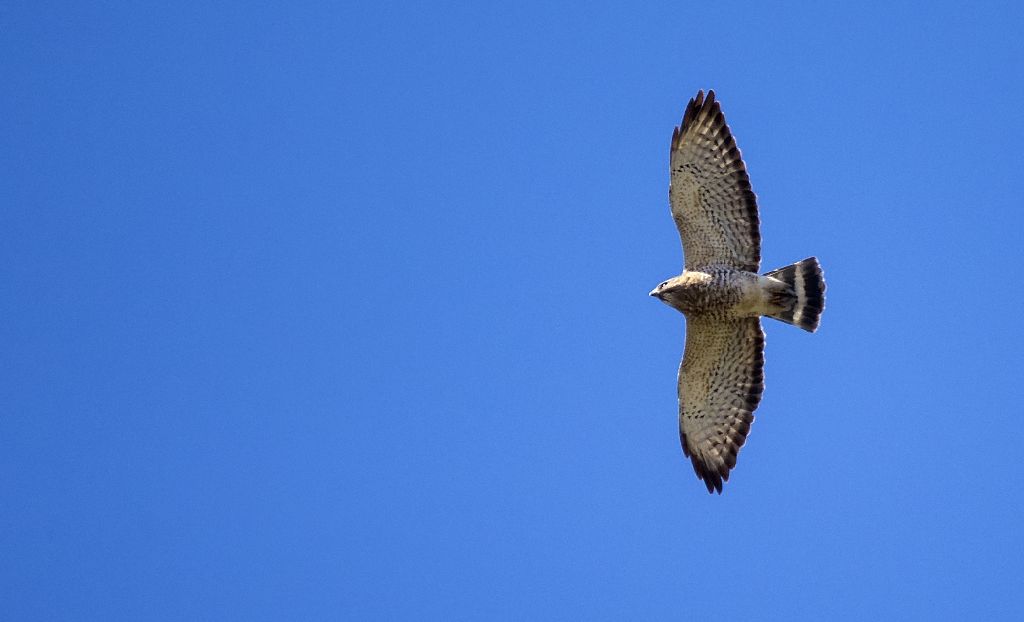
Broad-winged Hawk
Pentax K-5 + Sigma 150-500@500mm
1/2500sec., ƒ/6.3, ISO 1250
That encounter I didn’t even realize the weight of until I returned home to review my photos! So off I went, over to the second pond in search of a Common Loon that had been seen there earlier in the week. I even lucked out with a kayaker doing laps around the pond, occasionally pushing the loon just a little closer each time until I got a shot I felt was post-worthy.
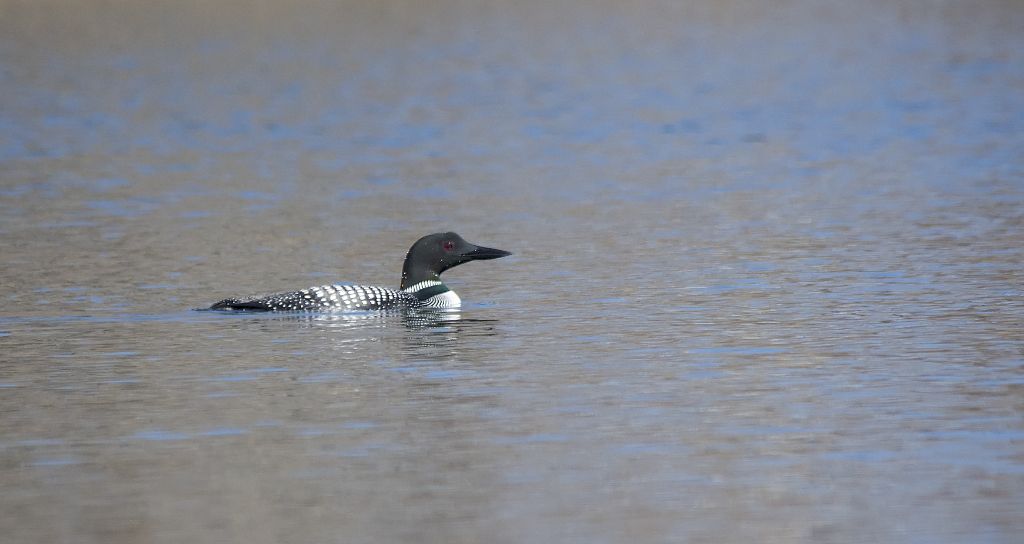
Common Loon
Pentax K-5 + Sigma 150-500@500mm
1/2500sec., ƒ/6.3, ISO 1000
Hope you enjoyed reading this post, and as always, we’ll see you next week!
Good birding!
